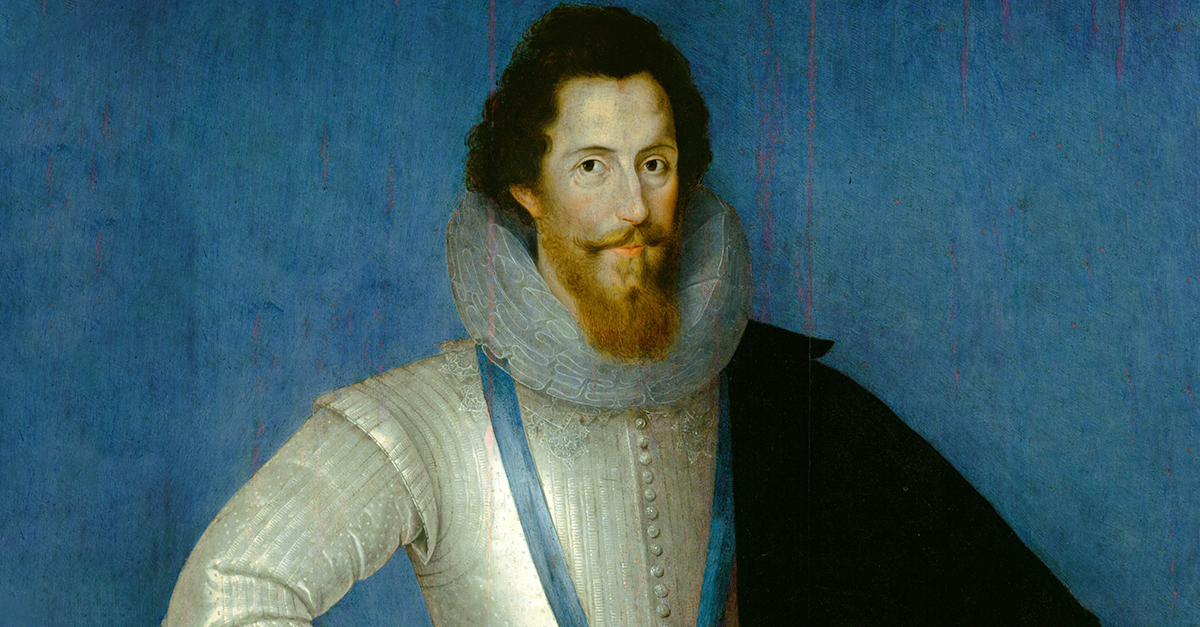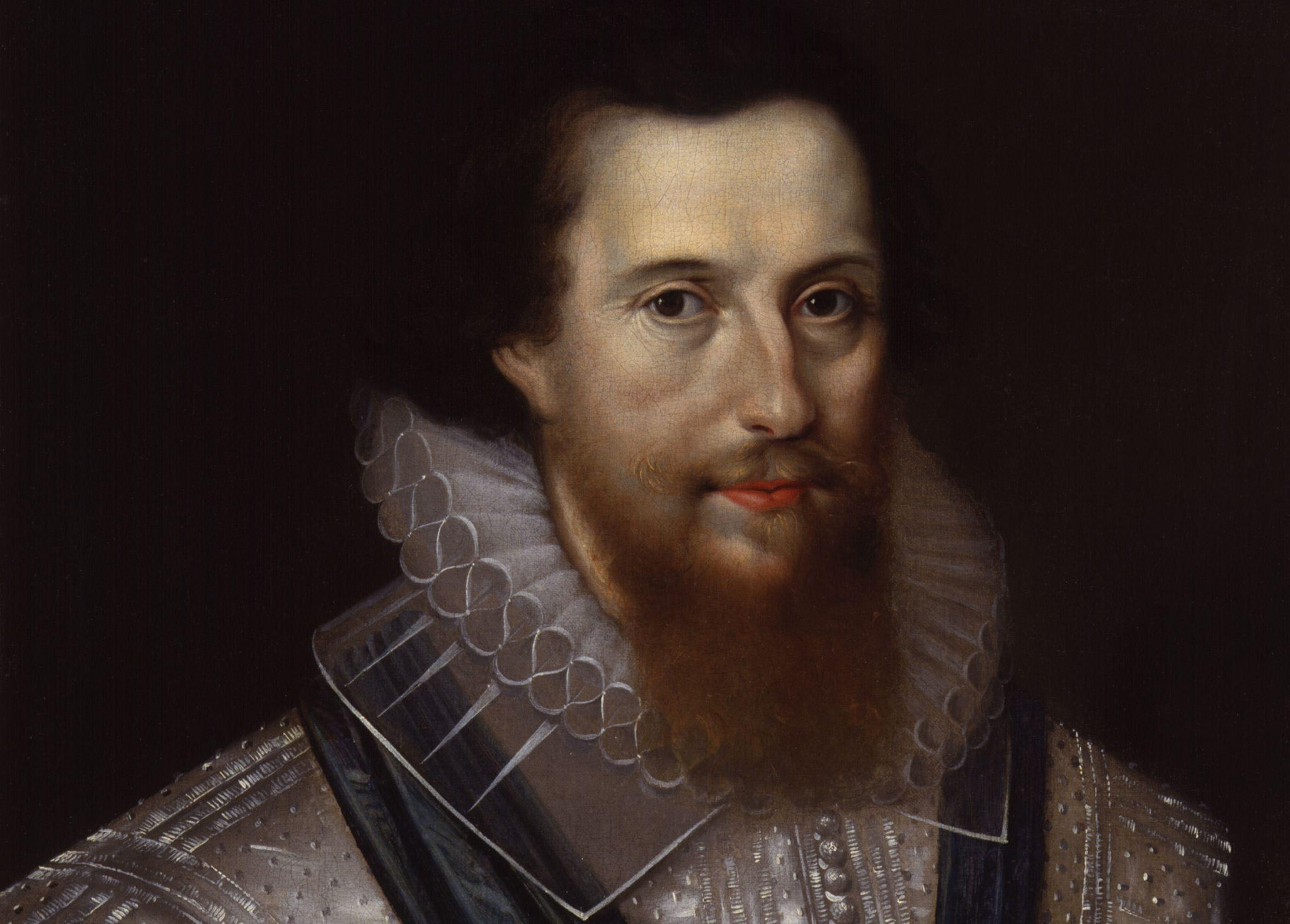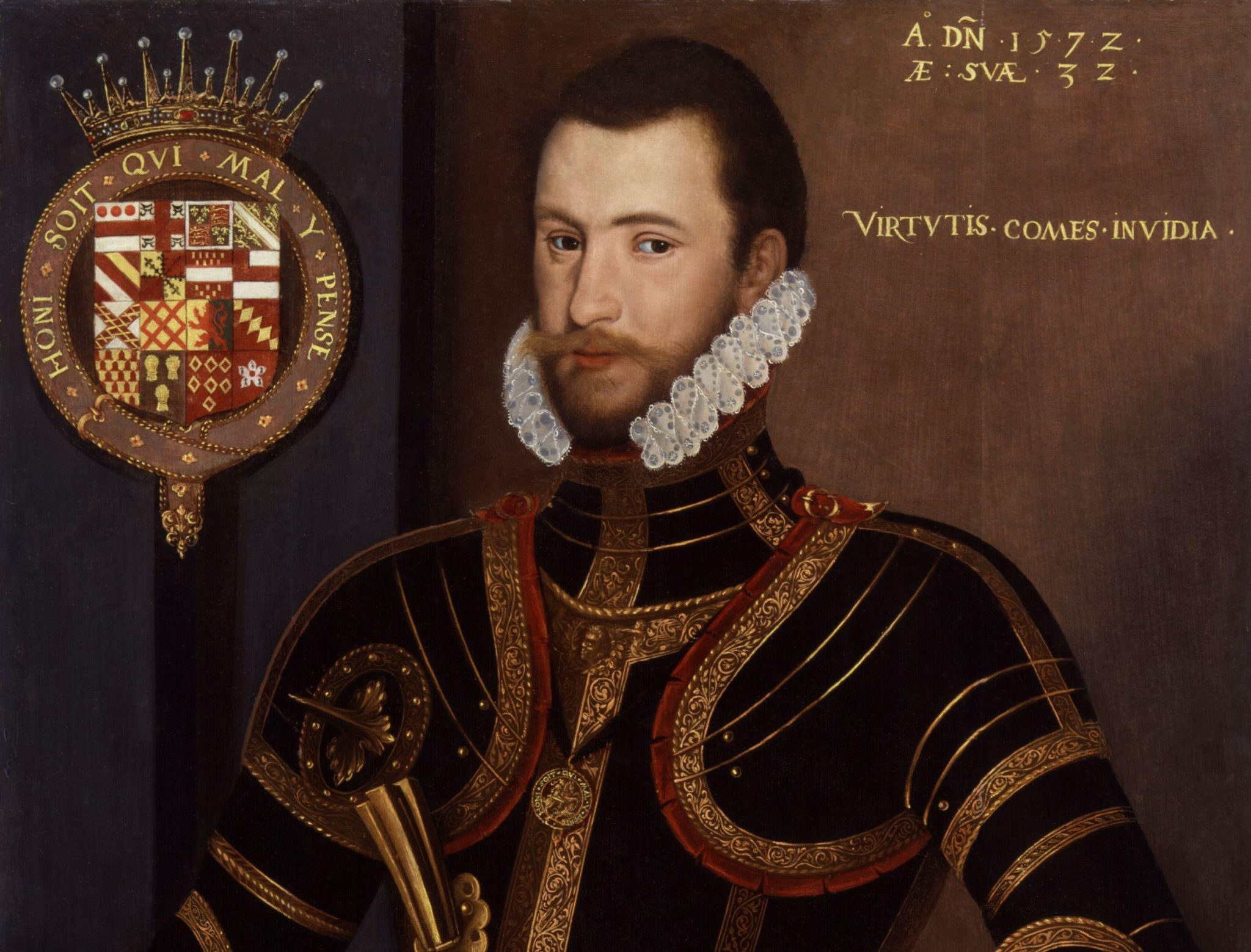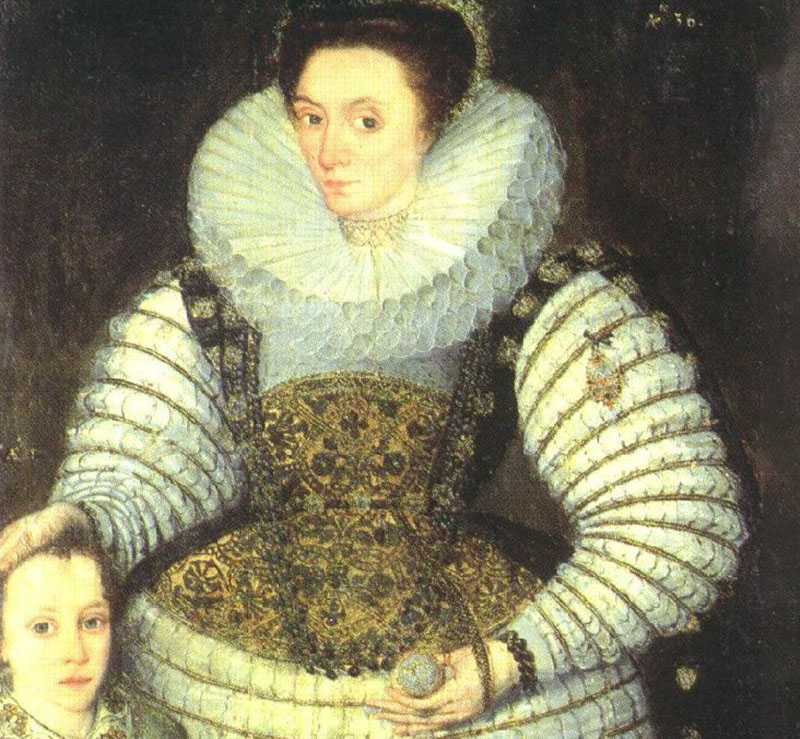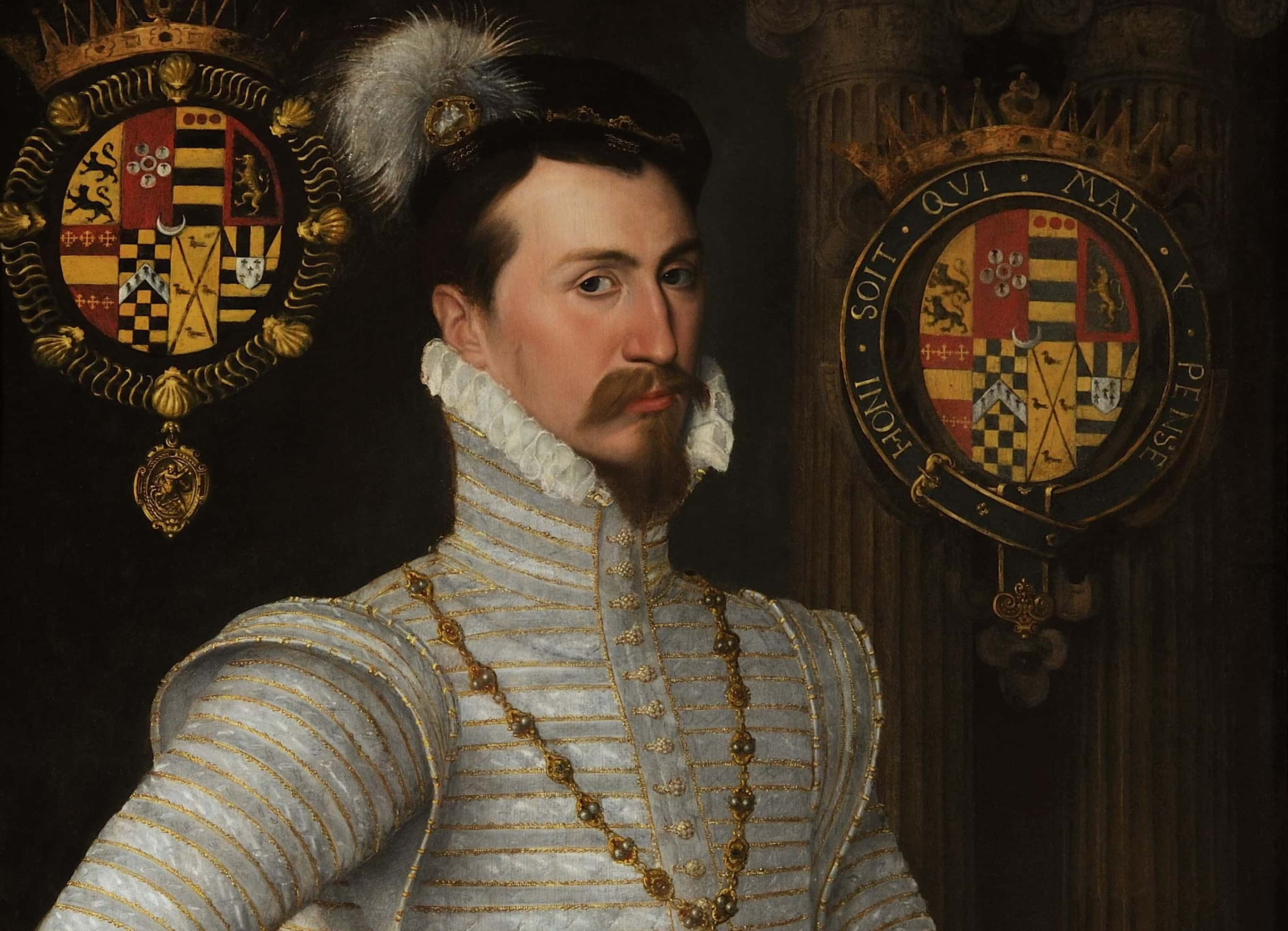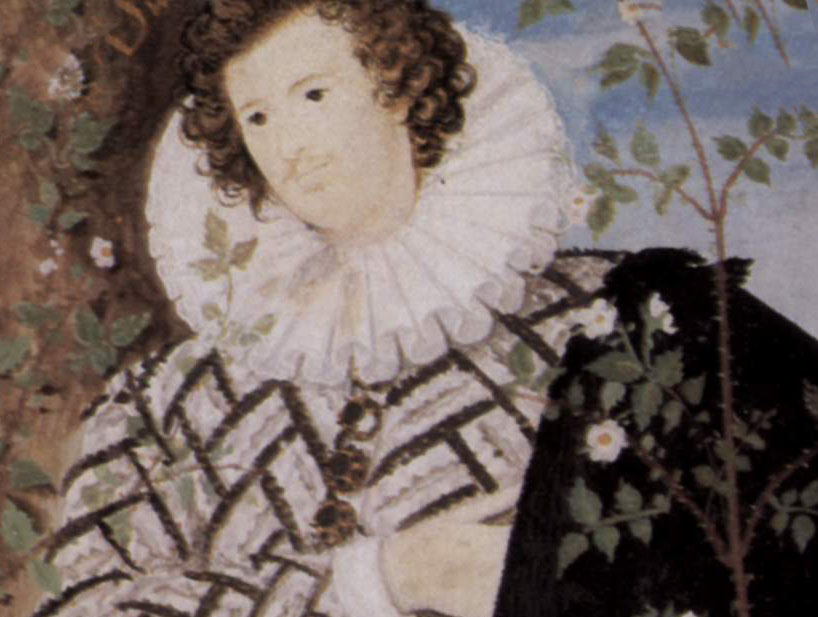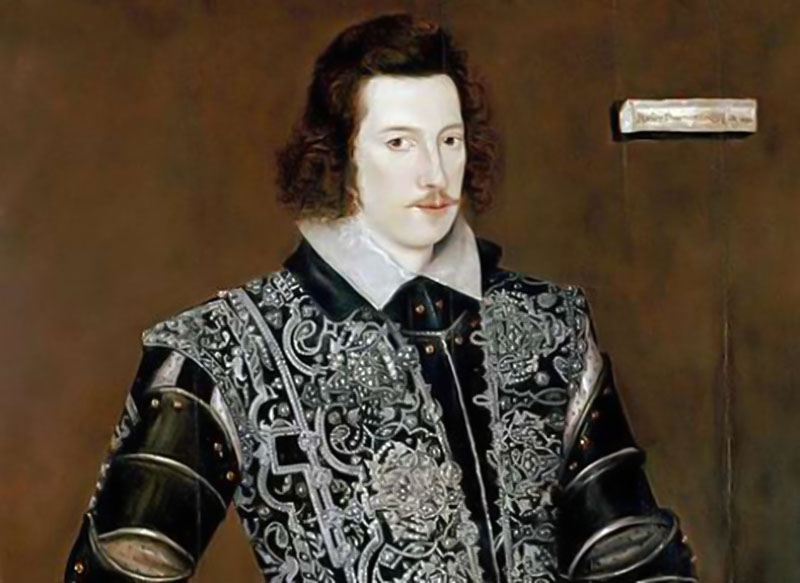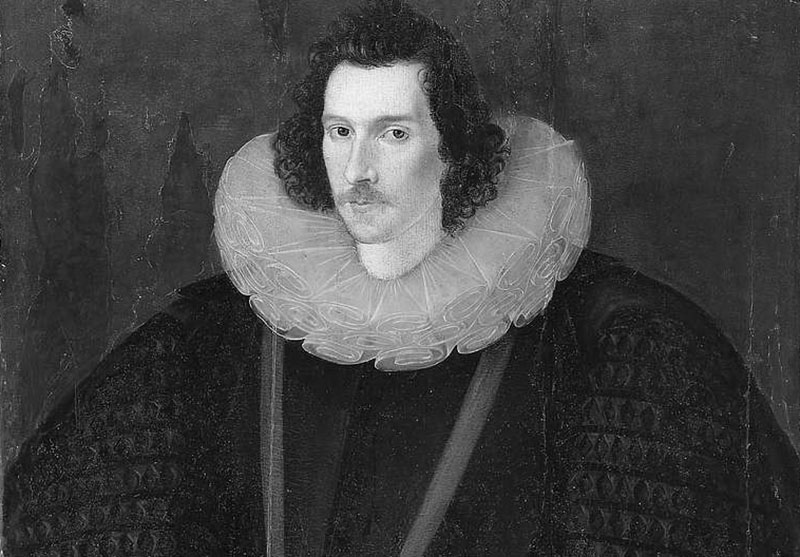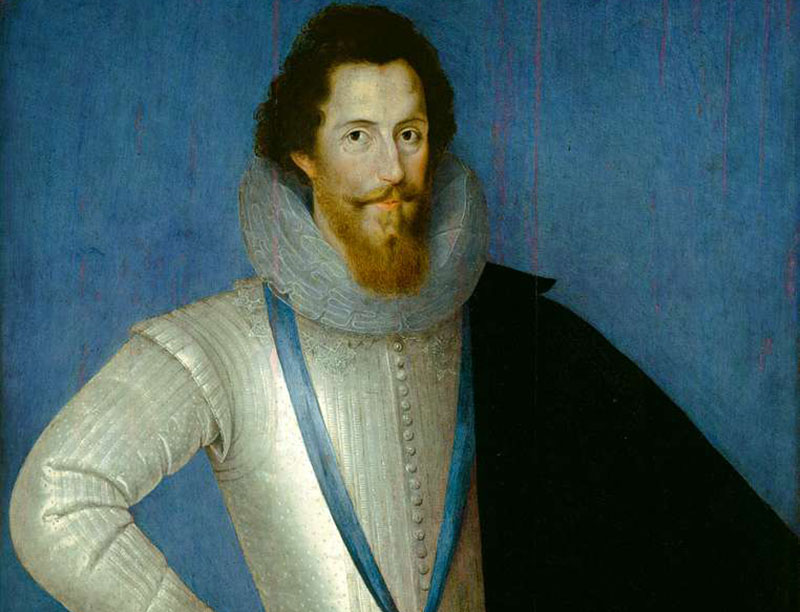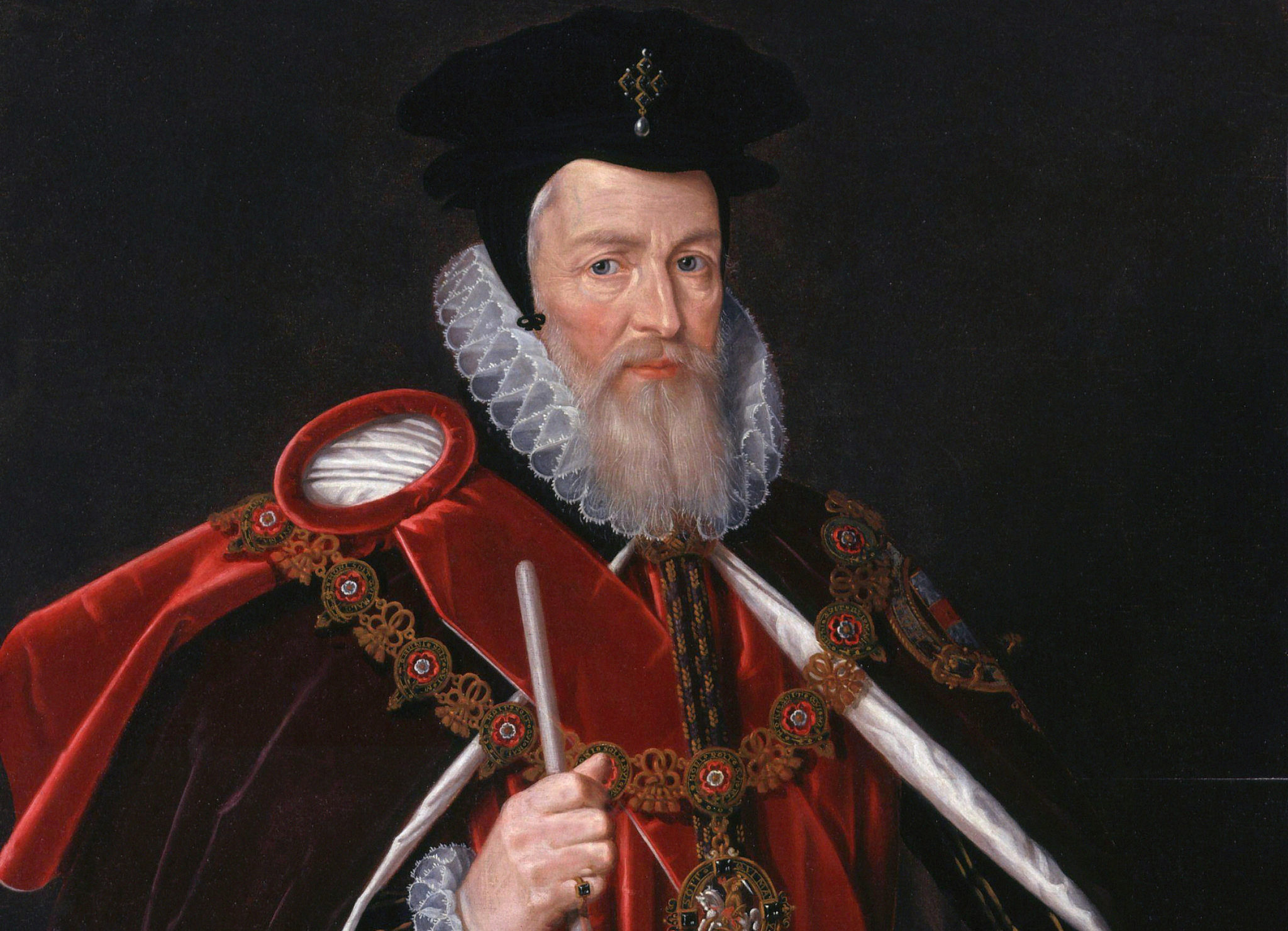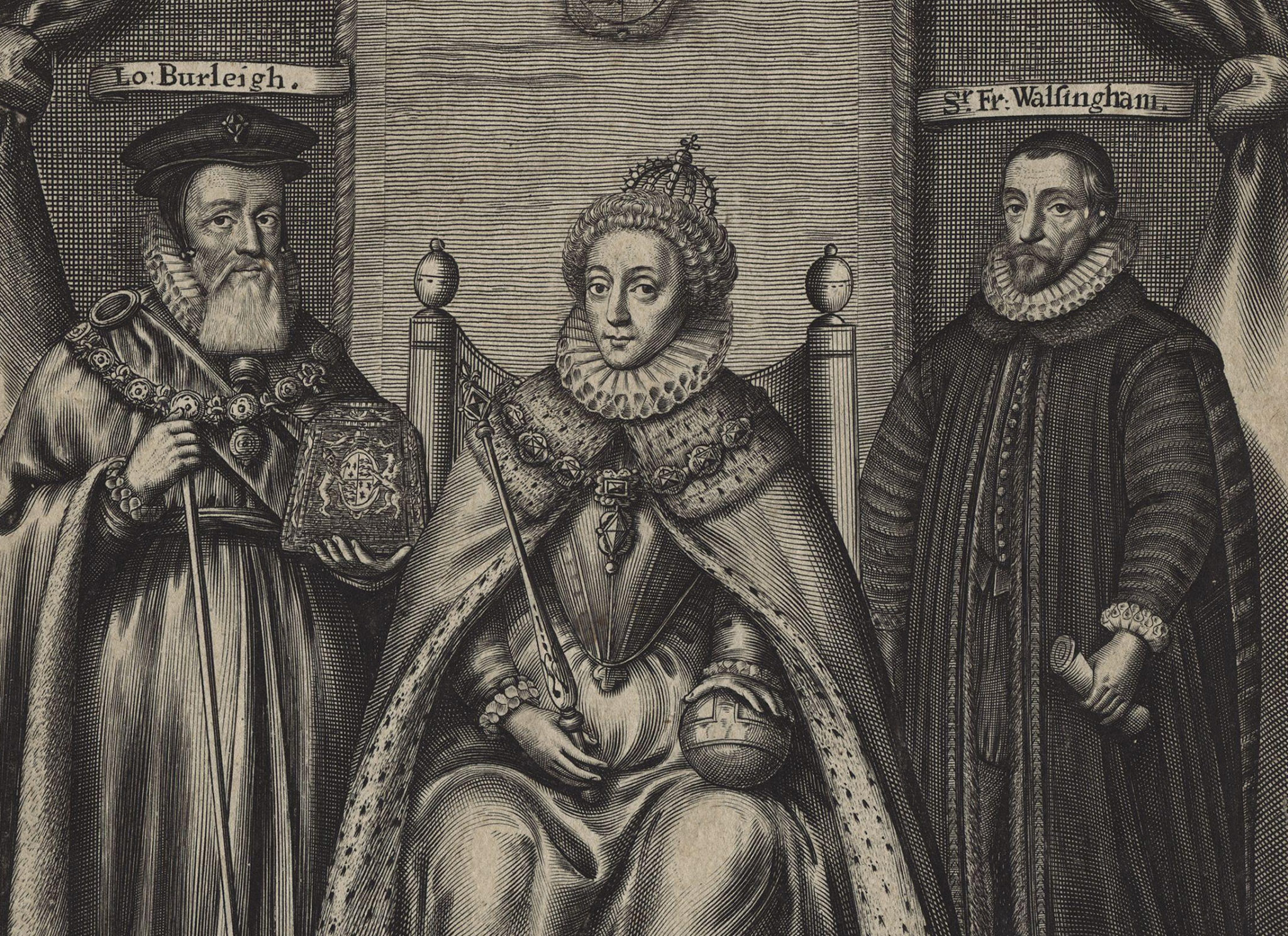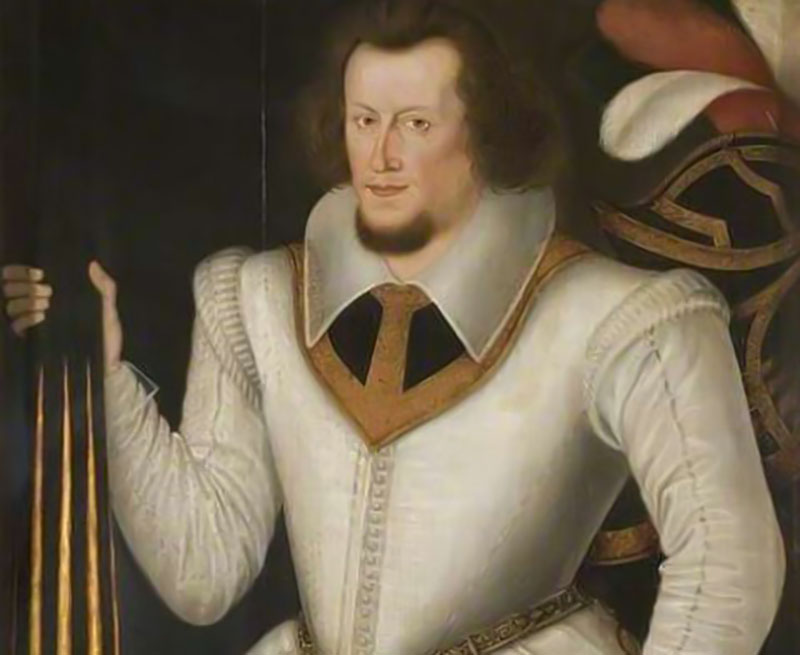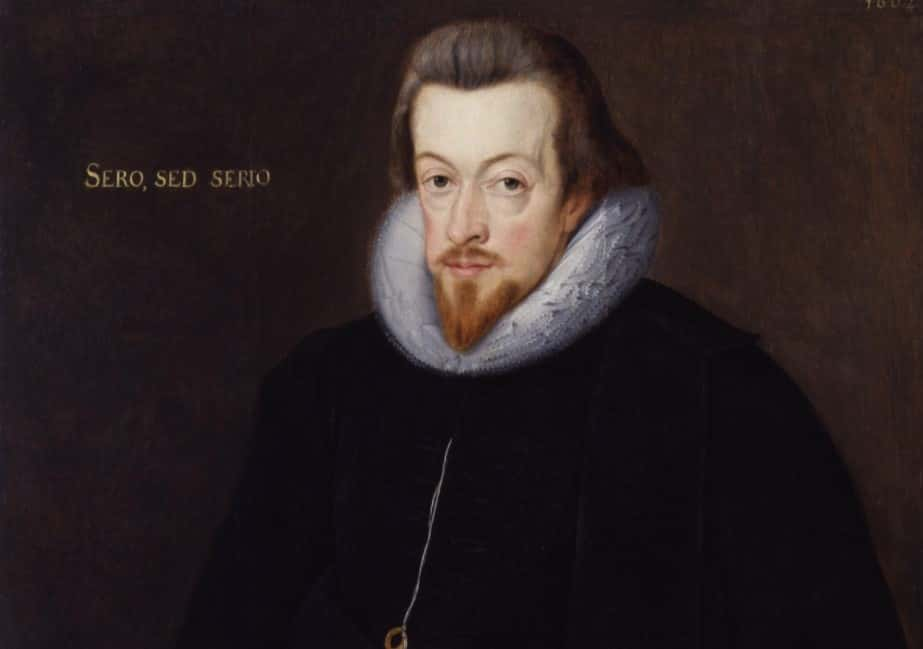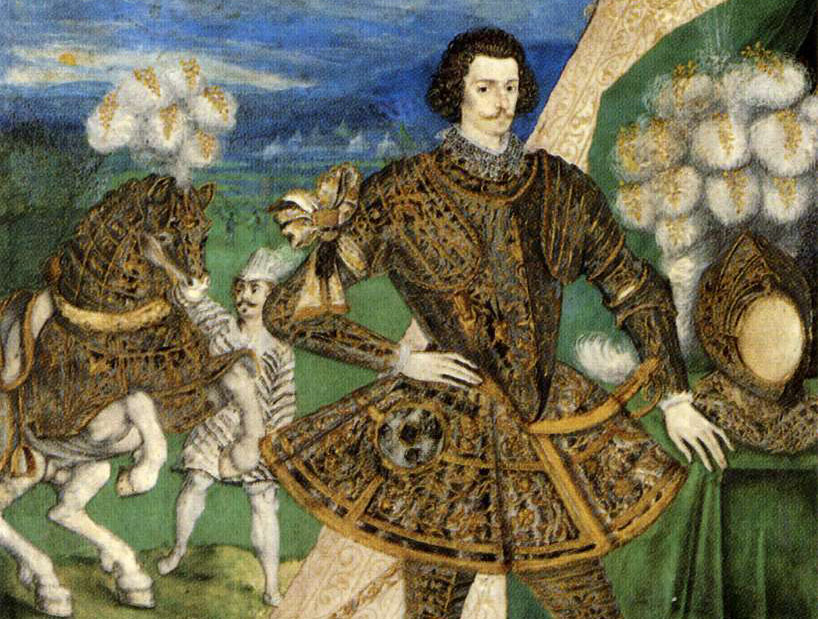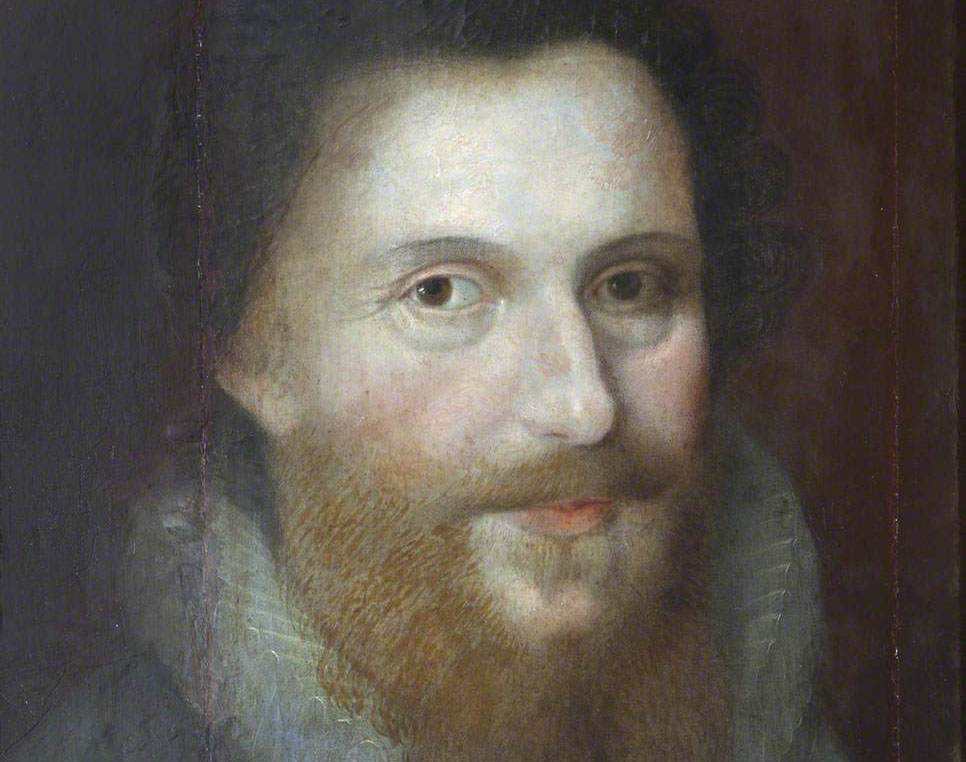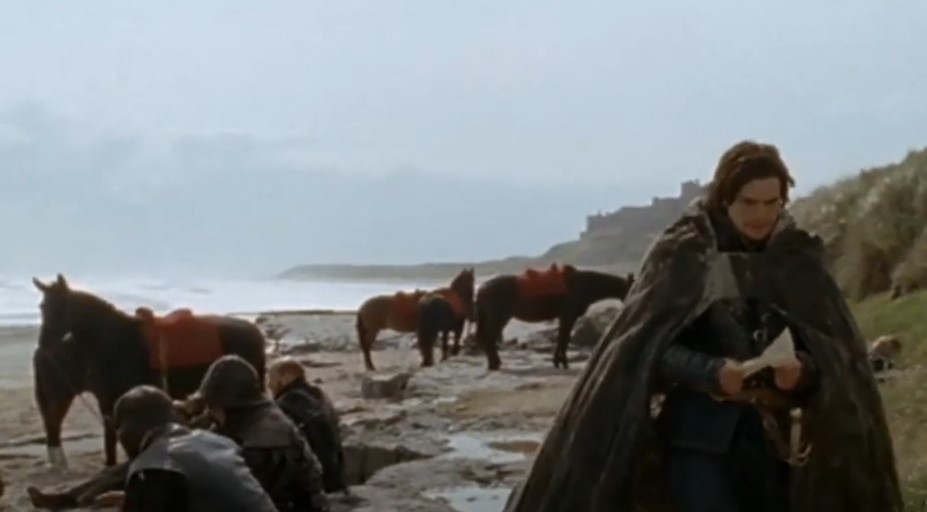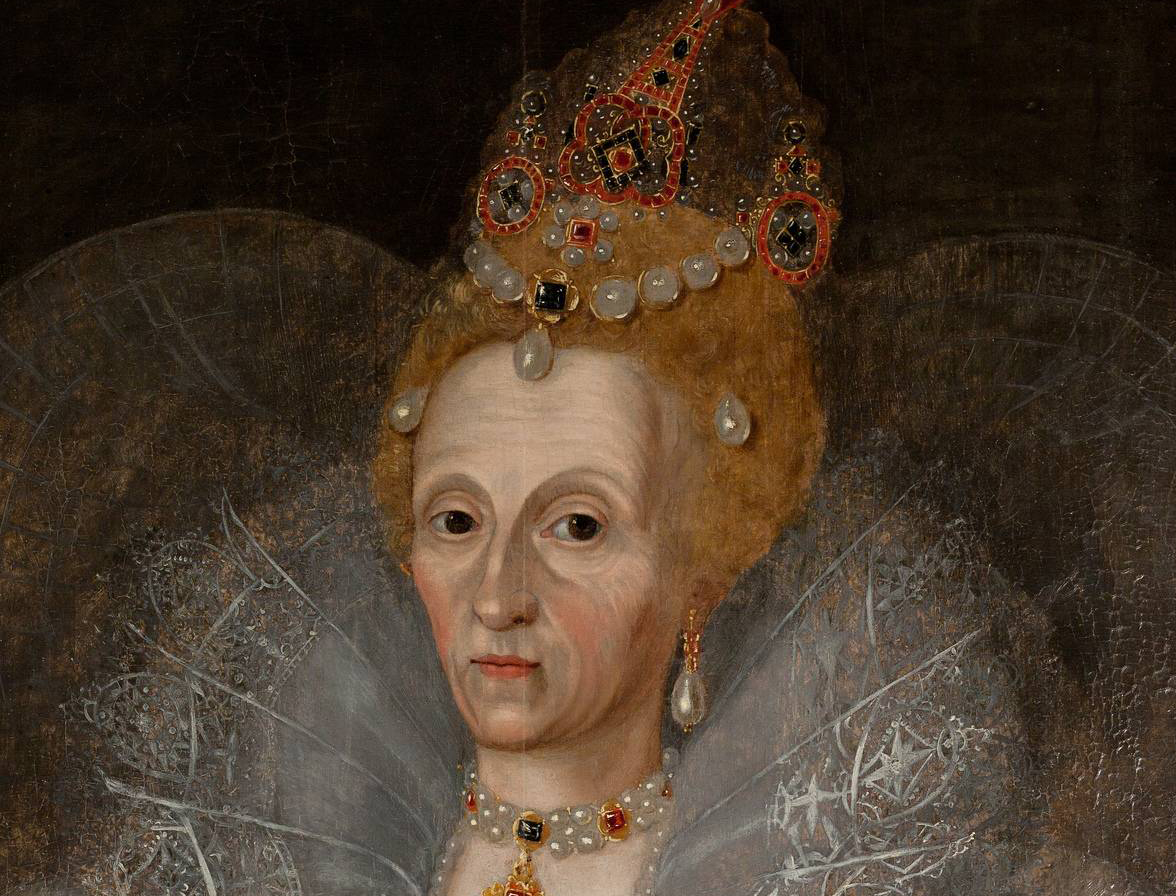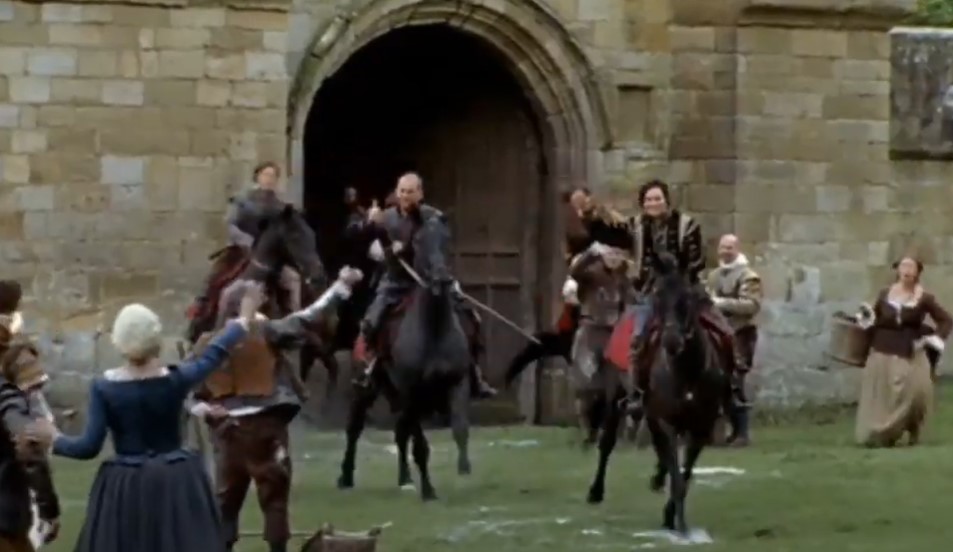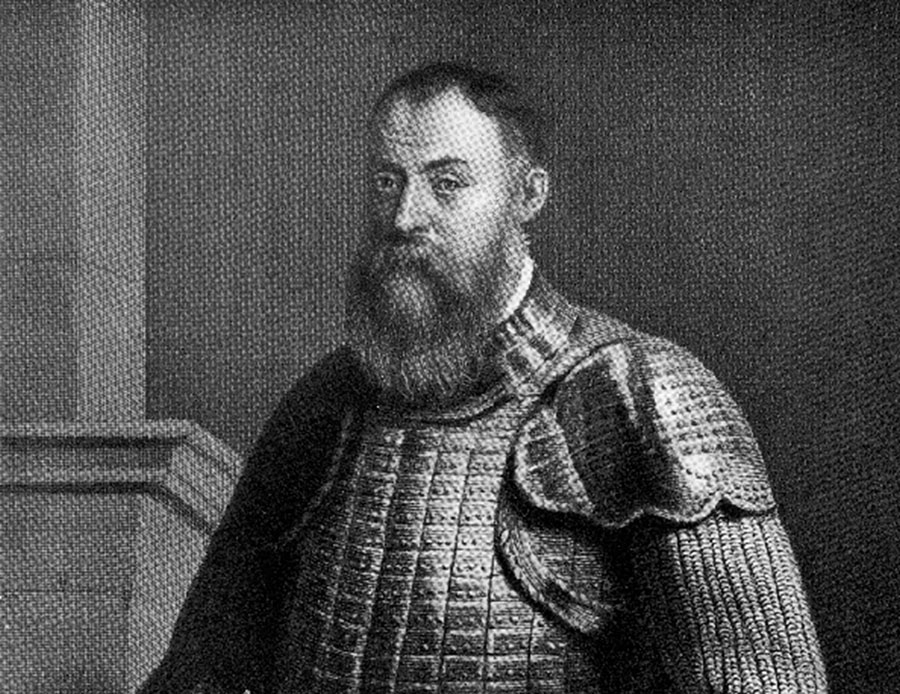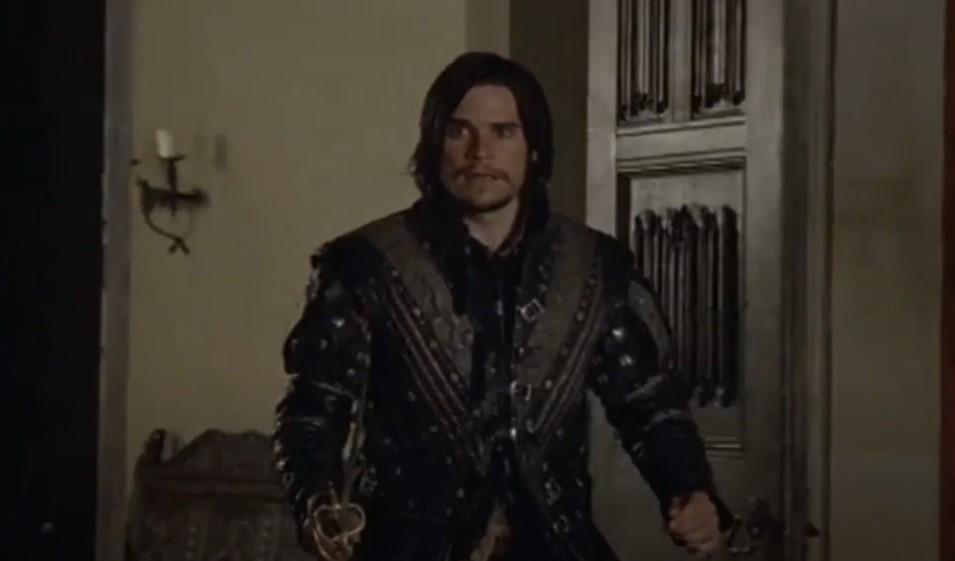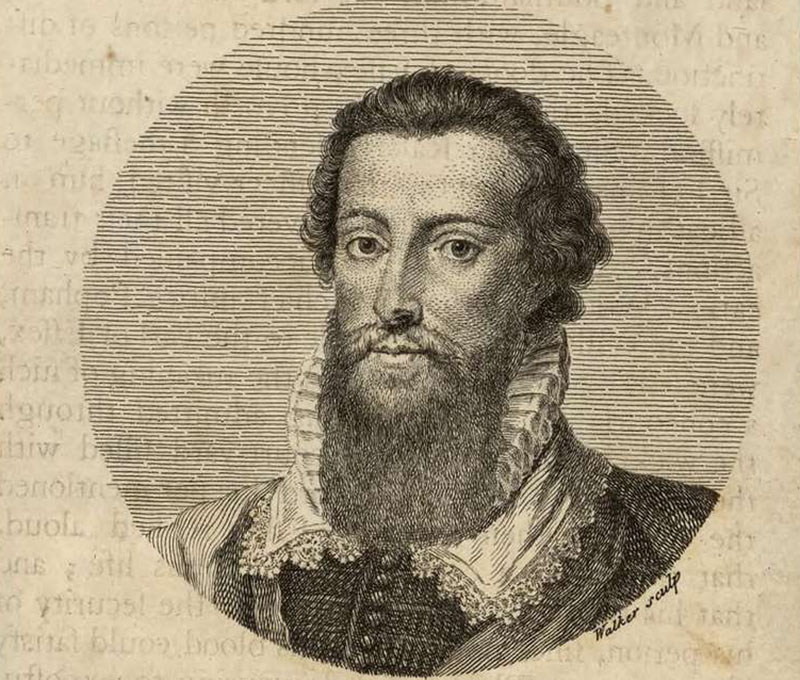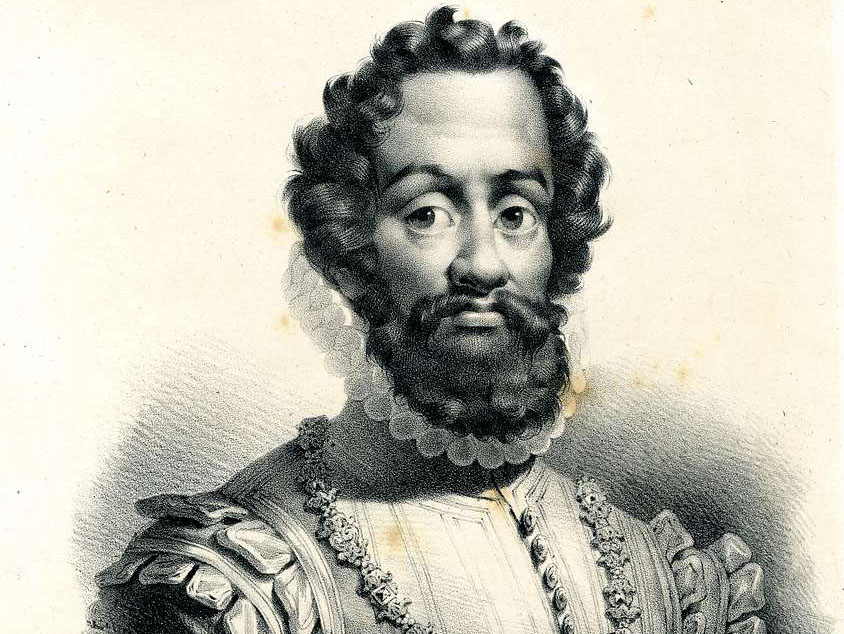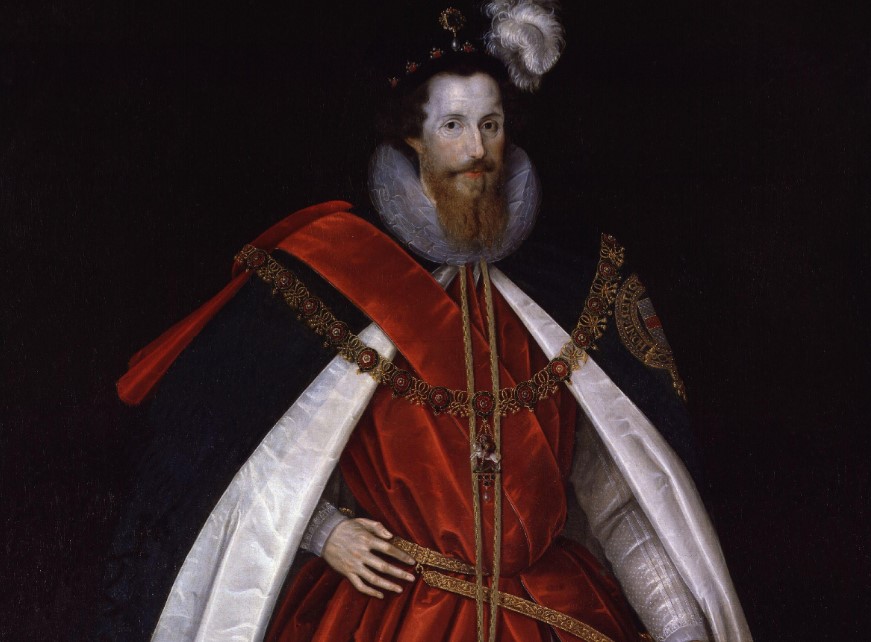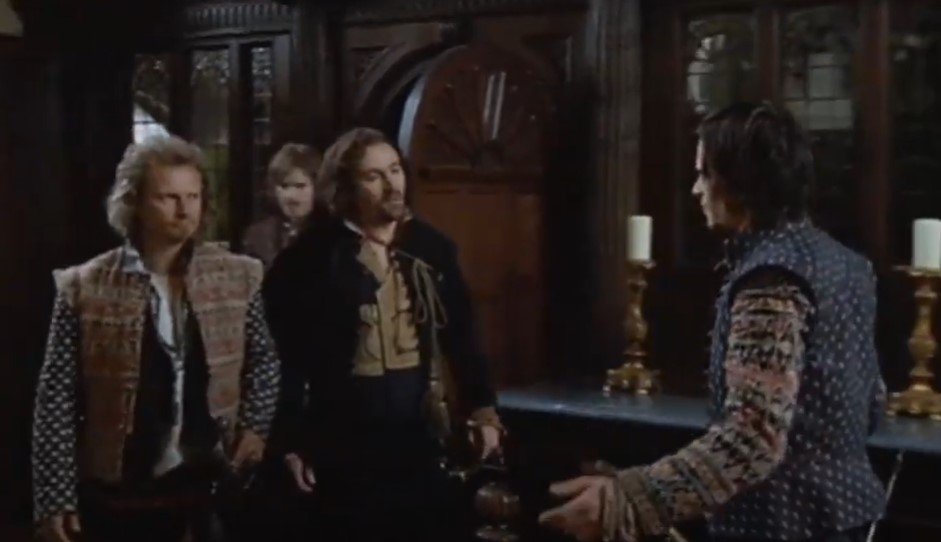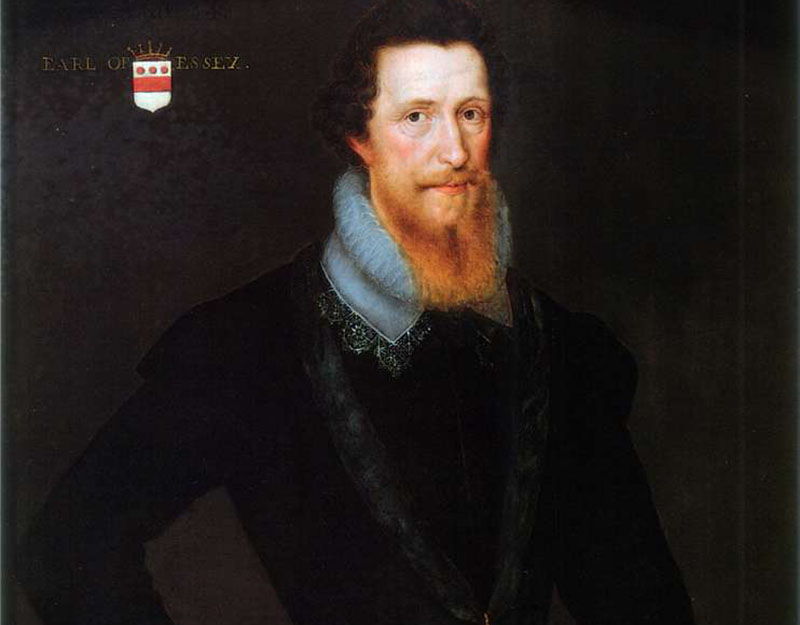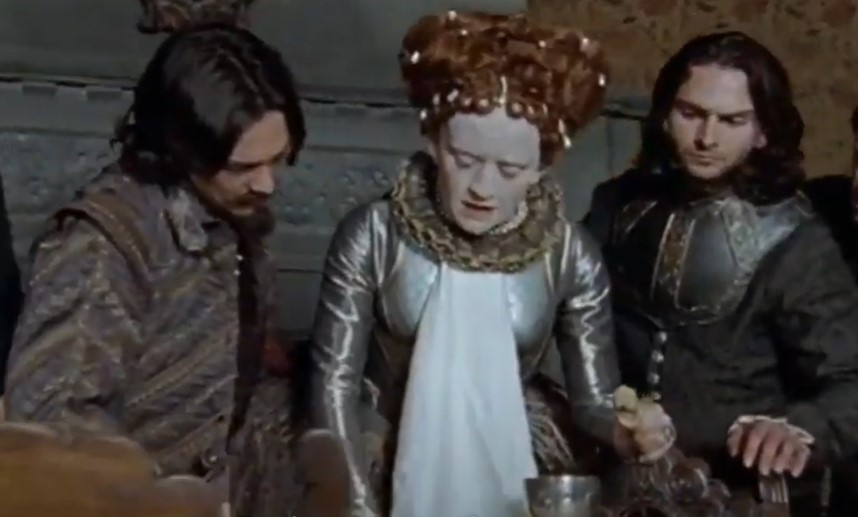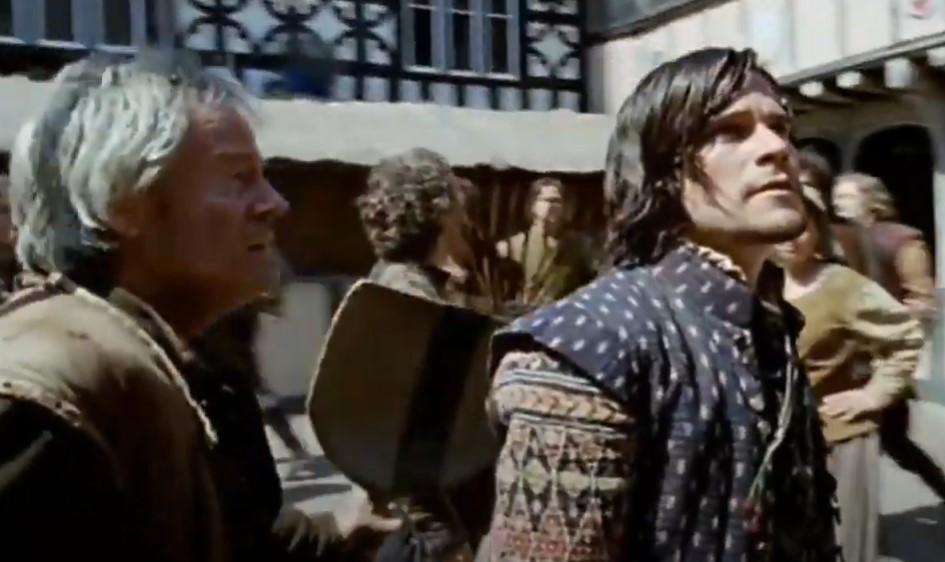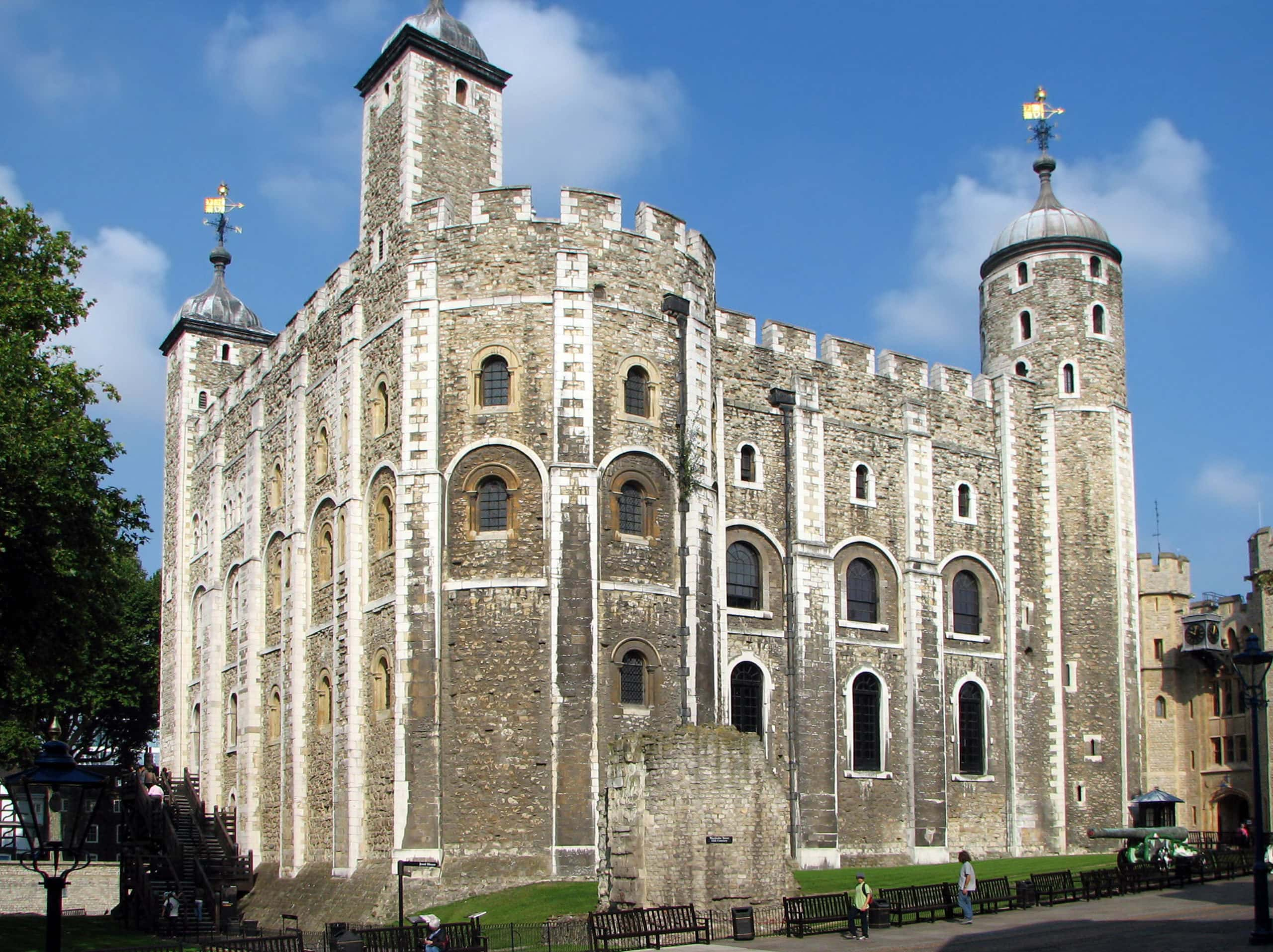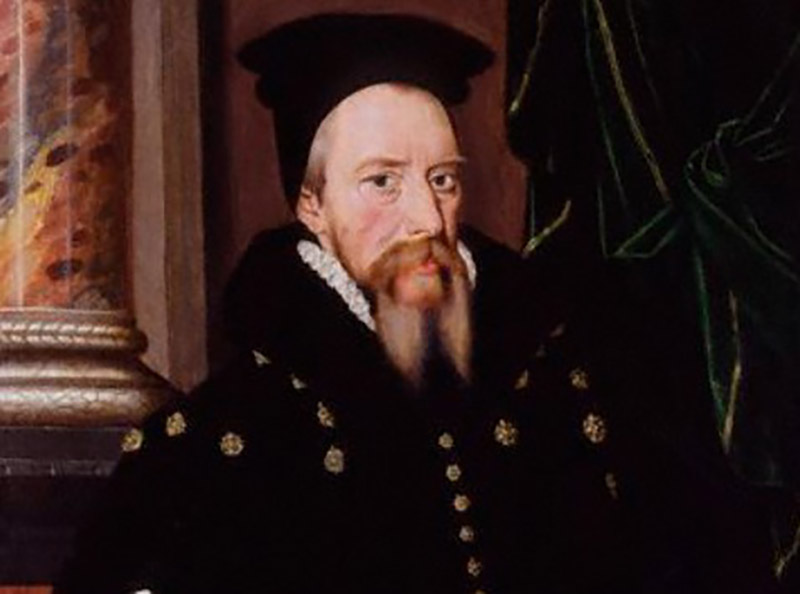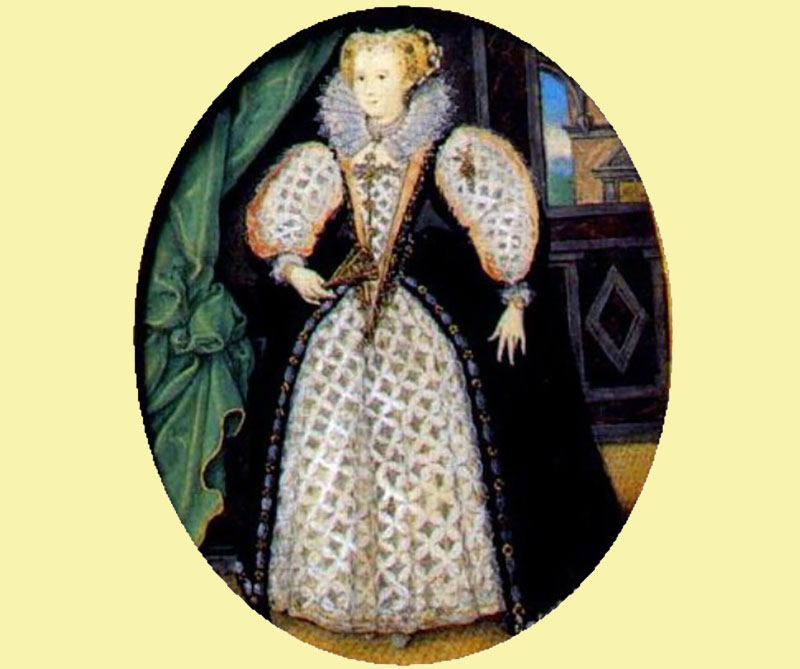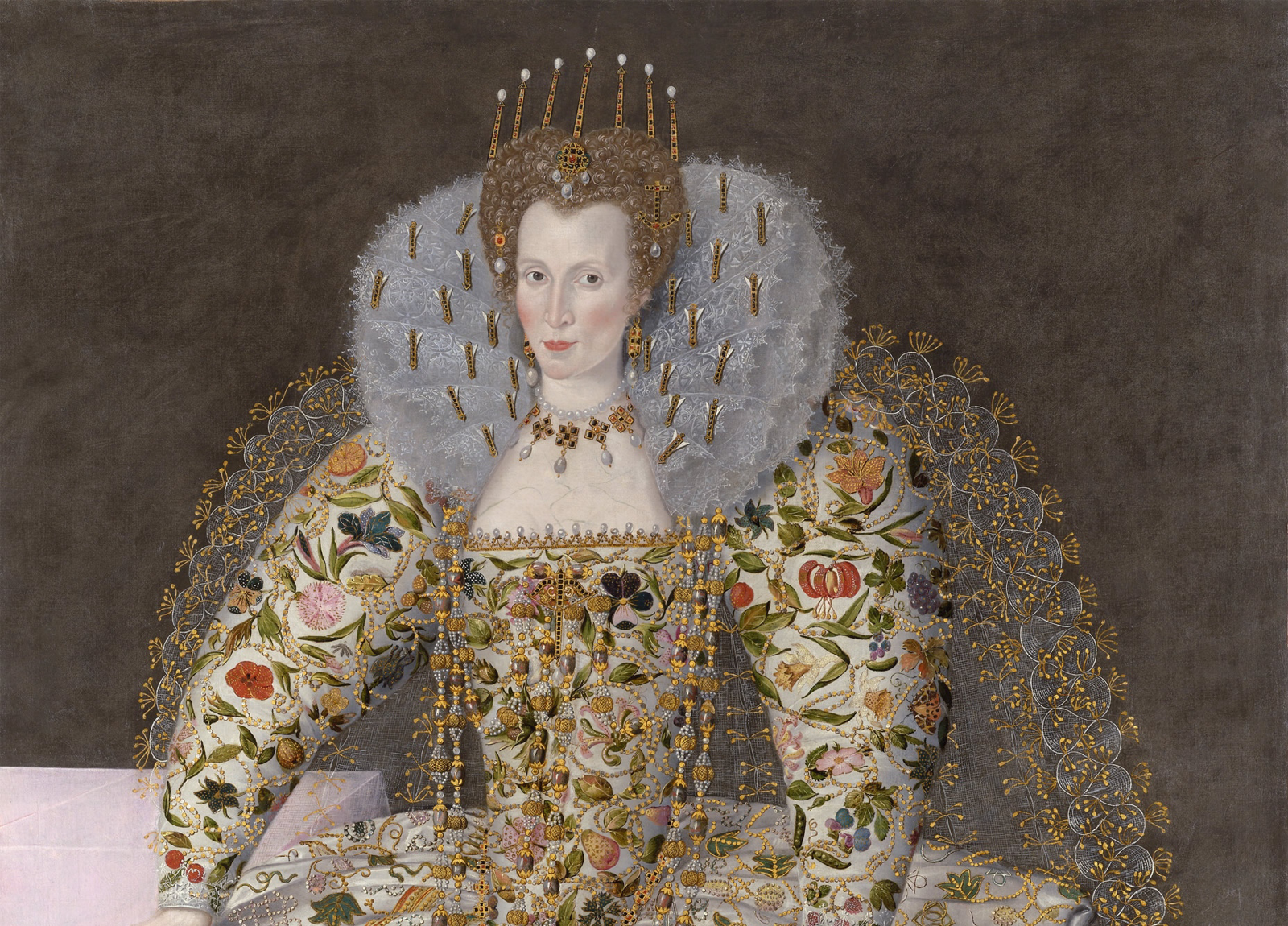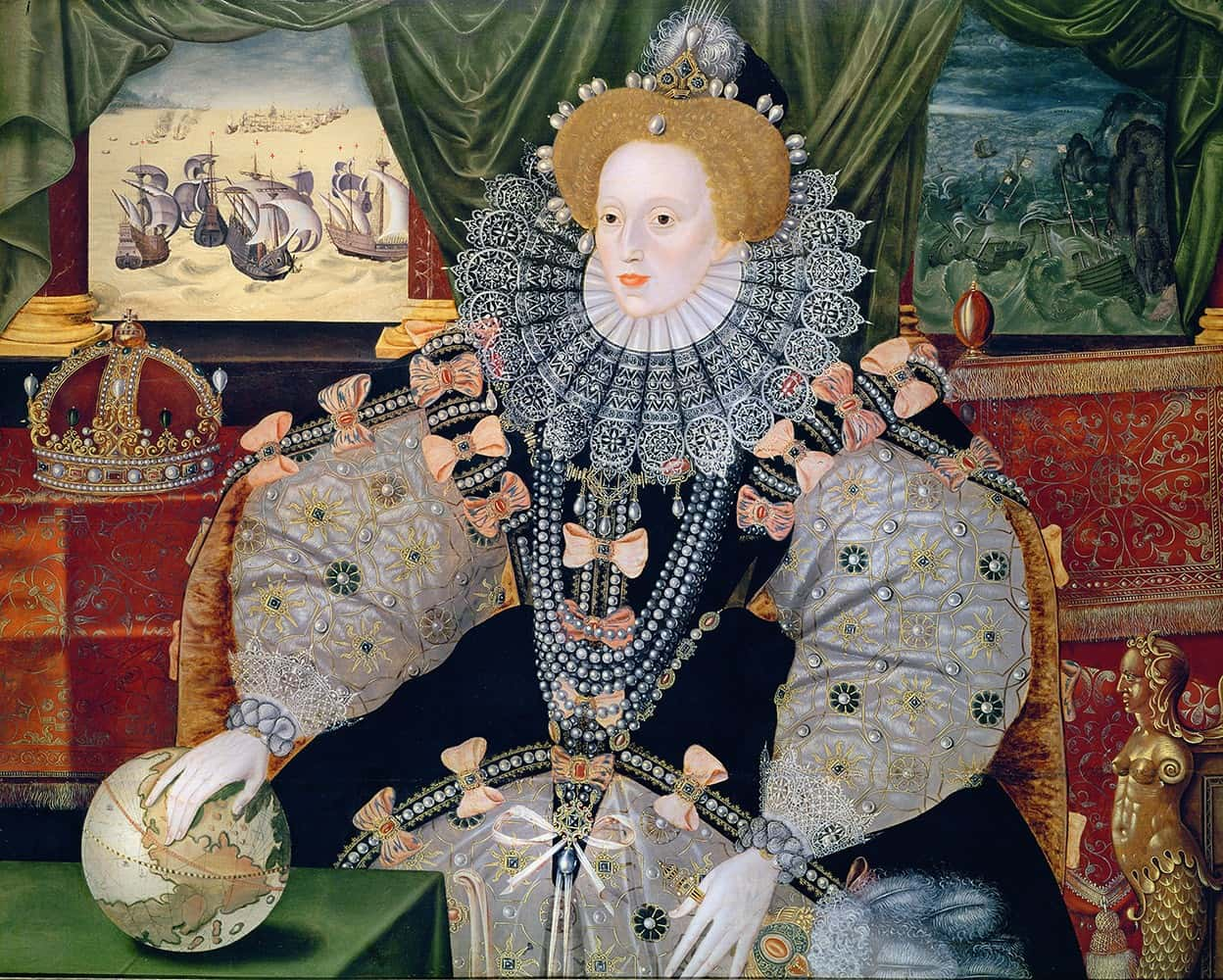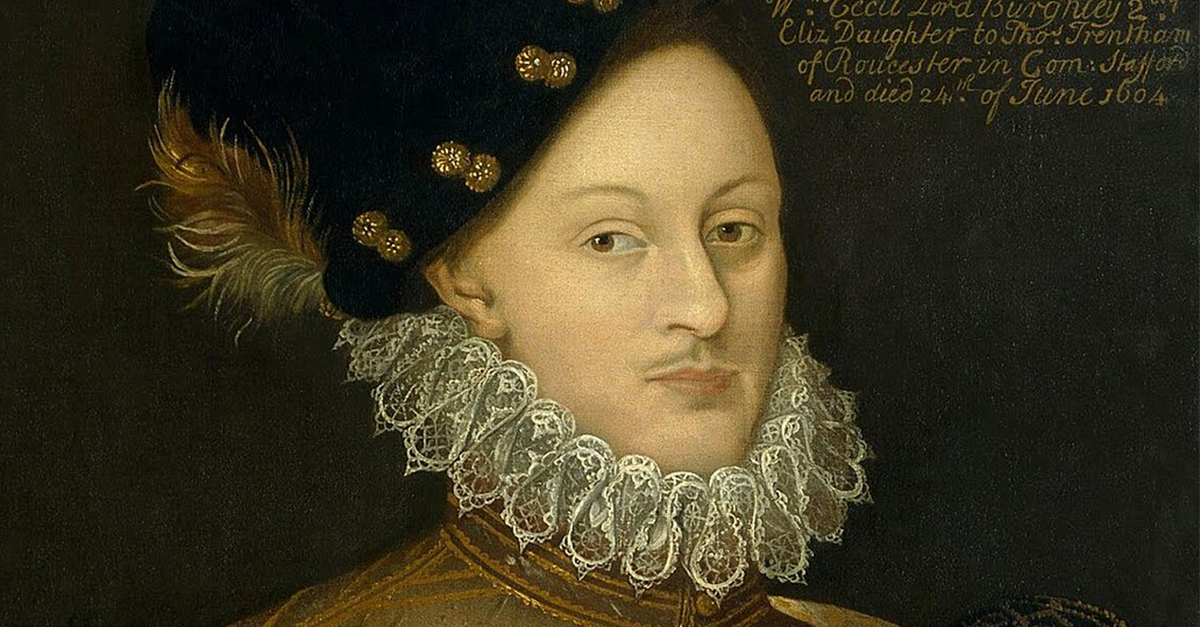Robert Devereux, 2nd Earl of Essex was “the darling of Elizabeth’s old age”—until he wasn’t. Charming but defiant, Devereux made more enemies at court than he did on the battlefield. A few acts of insubordination, a failed Irish campaign and one poorly conceived coup d’état later, Devereux went from hero to zero. Or, more accurately…from hero to headless.
1. He Was Related To Royalty
Robert Devereux was born in November 1565 to Walter Devereux, 1st Earl of Essex, and Lettice Knollys. Through his mother, whose grandmother was Mary Boleyn, he was the first cousin twice removed of Queen Elizabeth I. Despite their familial connections, however, Devereux would come to know Elizabeth’s white-hot wrath.
2. He Was A Poor Orphan Boy
The elder Earl of Essex, Walter Devereux, passed away under suspicious circumstances following a banquet in his honor as the newly appointed Earl Marshal of Ireland. His untimely demise left Devereux as a ten-year-old orphan and heavily indebted. Some sources claim that he was “the poorest earl in England”. But there are worse to be than poor.
3. His Mother Remarried A Monster
A few years later, Devereux’s mother remarried—but it might not have been to the greatest man. His new stepfather (who also happened to be his godfather) was Robert Dudley, 1st Earl of Leicester, one of Queen Elizabeth I’s favorites. But he may have been hiding a dark secret.
He also happened to be the man suspected of having poisoned Devereux’s father. It was a brutal situation.
4. He Fought For The Man
Despite the possibility that Robert Dudley was the one responsible for turning Devereux into an orphan, Devereux still followed him into battle—literally. He fought alongside his stepfather in campaigns in the Netherlands where he distinguished himself for his service. He wouldn’t always serve honorably, however.
5. He Was A Darling
Devereux returned to England and joined the court in 1584. Slowly but surely, he became one of Queen Elizabeth I’s favorites, with some describing him as “the darling of Elizabeth's old age”. He impressed her with his wit, well-spoken nature, and skills as a courtier. You might say that it went to his head.
6. He Was A Headache
The historian Alison Plowden differed on the account of Devereux as Elizabeth’s favorite. While she conceded that the aging monarch liked to dote on the handsome and charming earl, she said he was probably more like a headache for the Queen. Funny enough, his head would be the one aching in the end.
7. He Made Enemies Easily
Sources describe Devereux as “rash, ambitious, arrogant, headstrong and used to getting his own way”. But he soon found that he was not the only one at court vying for the Queen’s attention. After he led the successful capture of Cádiz, Devereux found himself with powerful enemies.
Namely, Lord Burghley and his son, Robert Cecil.
8. He Wanted A Fight
Devereux—headstrong and confident—pushed Queen Elizabeth I to continue the Anglo-Spanish conflict. Fellow Privy Council members, Burghley and Cecil, however, influenced the Queen to negotiate peace. Pretty soon, the real battlefield was within the Queen’s inner circle. And the Queen herself would deal the first blow—to Devereux.
9. He Was Bloodthirsty
During one of their heated debates, Devereux denounced peace as dishonorable. However, Lord Burghley fired back, claiming that Devereux only cared about fighting, violence, and bloodshed. He even added: “Bloodthirsty and deceitful men shall not live out half their days”. They were wise and prophetic words. Too bad Devereux wasn’t listening.

History's most fascinating stories and darkest secrets, delivered to your inbox daily.
10. He Never Listened
Devereux’s friends tried to warn him not to underestimate Queen Elizabeth I. Though she was a woman—and an aging one at that—they warned Devereux that she had an iron will and was not easily persuaded. But they should have warned him about her iron first and her right hook. It could have saved him.
11. He Turned His Back On The Queen
During one particularly heated debate over the matter of Ireland, Devereux learned the hard way exactly how “iron-fisted” Queen Elizabeth I really was. When the Queen refused to take his recommendation, Devereux turned his back on her and gave what seemed to be a scornful look. Suffice it to say, Queen Elizabeth wasn’t having it.
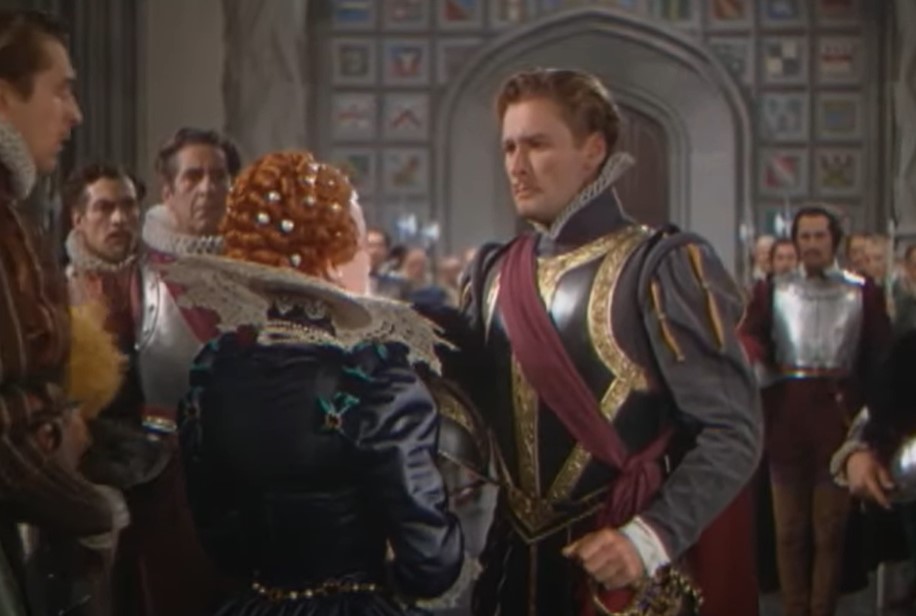 The Private Lives of Elizabeth and Essex (1939), Warner Bros.
The Private Lives of Elizabeth and Essex (1939), Warner Bros.
12. He Almost Struck The Queen
Devereux’s act of insolence enraged the Queen. Reports said that her patience for him waned and that she “gave him a cuff on the ear,” and told him to leave her sight. Without thinking, Devereux grabbed the hilt of his sword as if he meant to attack the Queen. Fortunately, the Lord Admiral intervened before he could do something he would really regret.
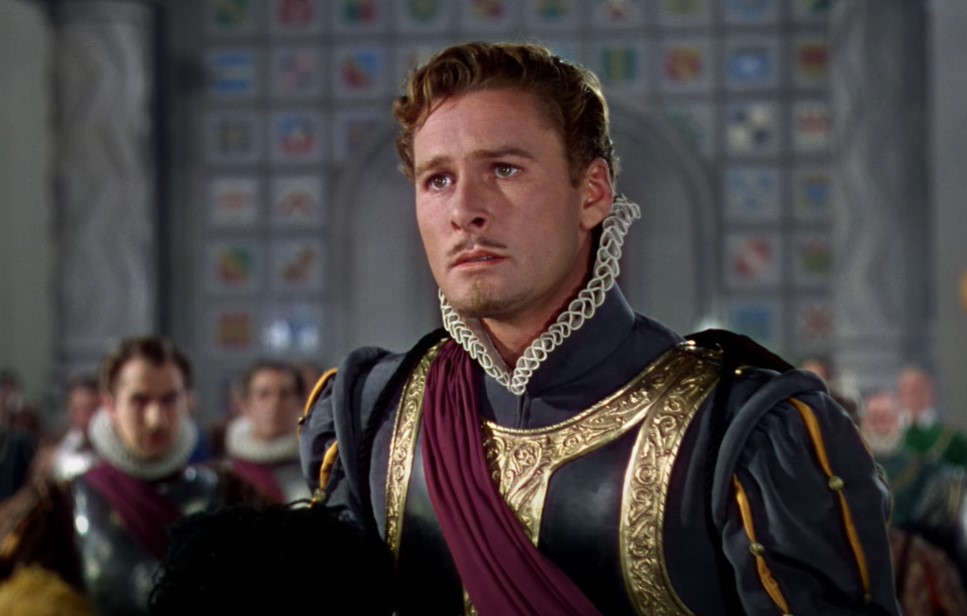 The Private Lives of Elizabeth and Essex (1939), Warner Bros.
The Private Lives of Elizabeth and Essex (1939), Warner Bros.
13. He Thought The Queen Was Crooked
No one knows for certain exactly what Devereux said after the Lord Admiral restrained him. Suffice to say, that it was not flattering to the Queen. Some sources claim that he called the aging monarch “as crooked in her disposition as in her carcass”. And from there on, he just kept digging his own grave deeper and deeper.
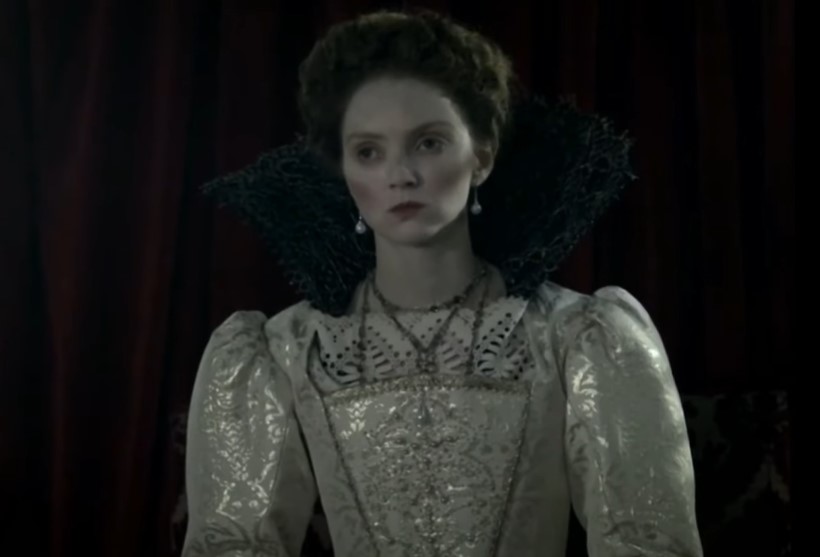 Elizabeth I (2017), Channel 5 Television
Elizabeth I (2017), Channel 5 Television
14. He Refused To Apologize
Everyone urged Devereux to apologize to the Queen for his rash actions. Devereux’s reaction was twisted. He doubled down on his insolent ways, writing in passionate detail about his indignation and all the many ways that the Queen was wrong. As if that wasn’t bad enough, he went on to reprimand her in his letter.
15. He Was Wounded
In his letter, Devereux continued insulting the Queen. He doubled down by saying that he’d never acknowledge he was wrong, because that’s a lie—and lying would go against God. He talked about how wounded he was and how it be impious of him to pretend to serve the Queen. Whether he liked it or not, however, he would do just that.
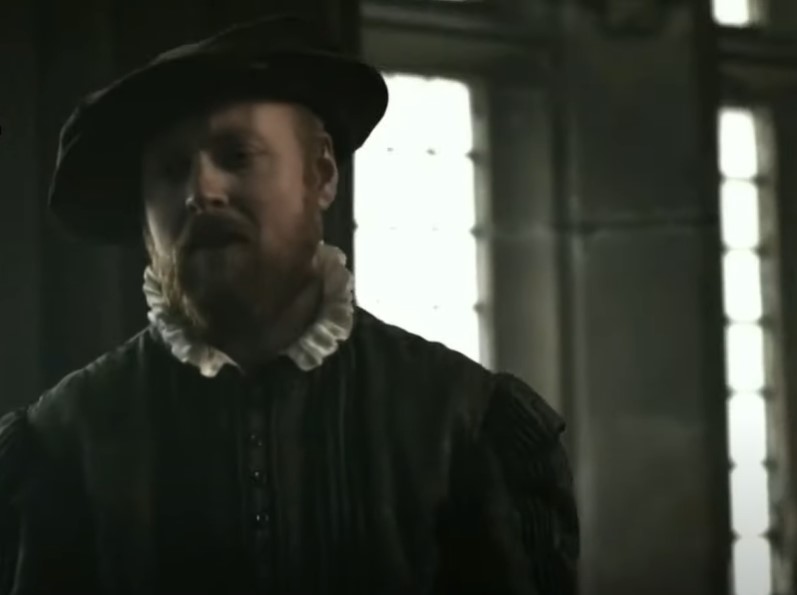 Elizabeth I (2017), Channel 5 Television
Elizabeth I (2017), Channel 5 Television
16. His Enemies Had It Out For Him
Remarkably, Queen Elizabeth I forgave Devereux for having turned his back on her—and for obstinately refusing to apologize for it. Nevertheless, his nemesis, Robert Cecil, saw an opportunity to remove Devereux from the Privy Council—and came up with a devious plot. He proposed that the Queen send Devereux to Ireland to quash the Catholic rebellion himself.
17. He Put On A Brave Face
Cornered, Devereux knew that he had to accept the appointment to prove his loyalty. Boastfully, he declared, “I have beaten Knollys and Mountjoy in the Council, and by God, I will beat Ter-Owen [Shane O’Neill] in the field”. He claimed he was the only one worthy of showing up for the Queen. Could he back those claims up? Well…
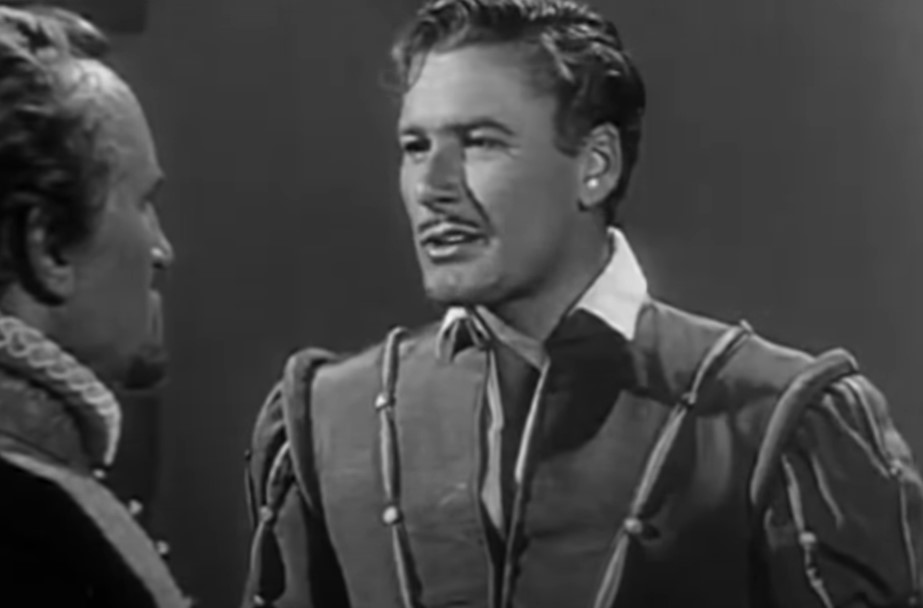 The Private Lives of Elizabeth and Essex (1939), Warner Bros.
The Private Lives of Elizabeth and Essex (1939), Warner Bros.
18. He Didn’t Want To Go
Despite his apparent eagerness, Devereux knew that leaving court would diminish his influence if he wasn’t successful. Writing to a confidant, he said he went to Ireland knowing that his absence would put him at a serious disadvantage. Devereux would really have to make his own luck if he were going to keep his position in court…
19. He Got A Hero’s Farewell
With 16,000 men, Devereux vowed that he would crush the Irish rebels along with their leader, Shane O’Neill. And hopes among the English people were high. When he departed in March of 1599, throngs of citizens crowded the streets to see off the “Hero of Cádiz”. In just a few short years, however, he’d be the “Zero of London”…
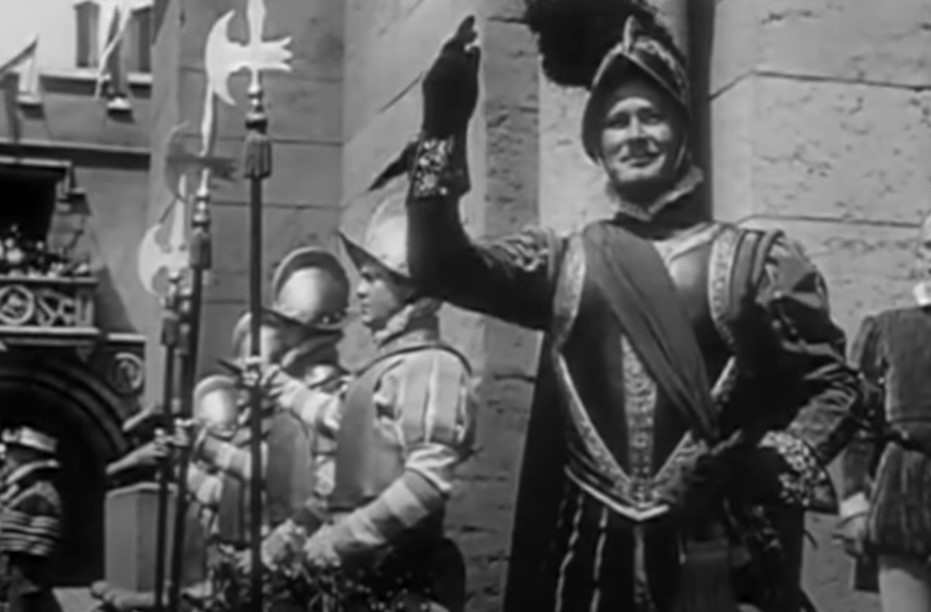 The Private Lives of Elizabeth and Essex (1939), Warner Bros.
The Private Lives of Elizabeth and Essex (1939), Warner Bros.
20. He Had Bad Luck
Devereux’s campaign got off to a bad start—one filled with chilling omens. As he left London, a terrible hail began to fall. He later complained about setting sail for Ireland from Wales in “the worst way and in the extremest wet that I have endured”. Worse yet, his Irish connections along with the Earl of Kildare, drowned at sea when their ship foundered.
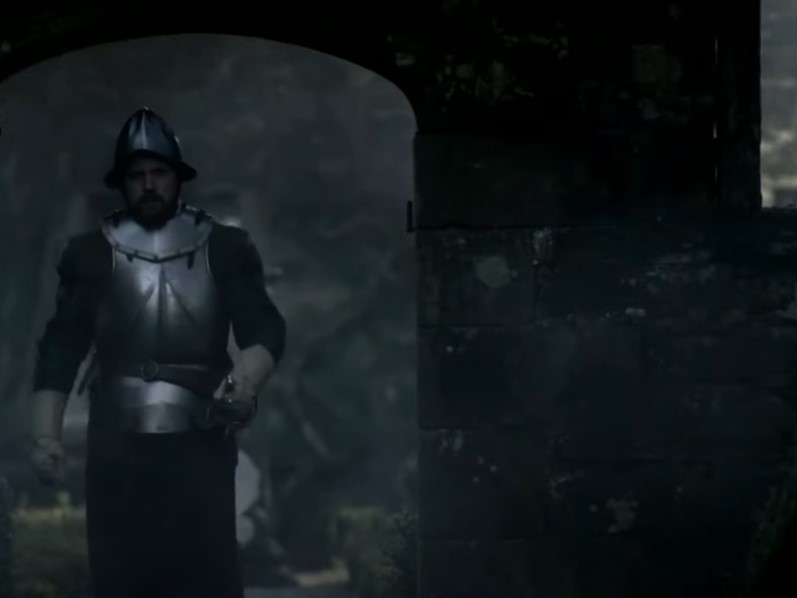 Elizabeth I (2017), Channel 5 Television
Elizabeth I (2017), Channel 5 Television
21. He Took It In The Backside
When he arrived in Ireland, Robert Devereux tried to endear himself to the regiments already posted there. In one embarrassing gaffe, he made a mock charge on a veteran regiment from Flanders but they chose not to partake in the joke. As a result, Devereux had to pull back on his horse and received a prick “in the backside with a pike”.
22. He Wasn’t Planning To Succeed
From the minute the Queen had appointed him, Devereux knew that he was in over his head. And he tried to weasel his way out of responsibility. He wrote to the Privy Council, complaining about the conditions, lowering their expectations, and begging for pity. Well, they definitely didn’t pity him.
23. He Was Losing Ground
Far from “extraordinary success”, Devereux met with brutal failure. He was far more familiar with the pitched battles from the continent than he was with the guerilla-style tactics of the Irish rebels. Forced to spread his forces out across multiple fronts and various garrisons, he made no tangible gains. And the Queen noticed.
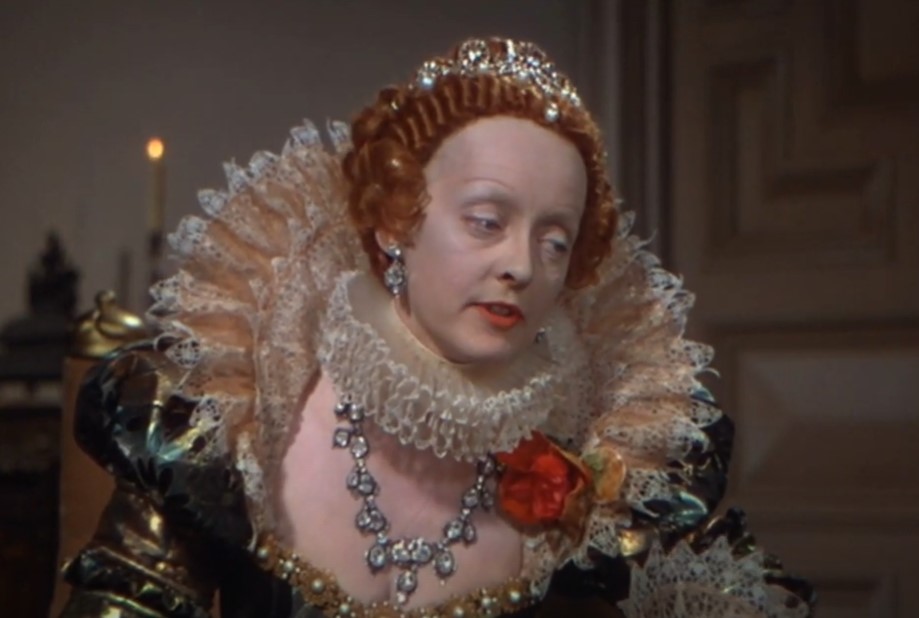 The Private Lives of Elizabeth and Essex (1939), Warner Bros.
The Private Lives of Elizabeth and Essex (1939), Warner Bros.
24. He Couldn’t Leave
When Devereux wrote to the Privy Council, the Queen replied by reading him the riot act. “…you have broken the heart of our best troops and weakened your strength upon inferior rebels,” she wrote back, “ and run out the glass of time which can hardly be recovered”. Importantly, she forbade Devereux from leaving Ireland until he ironed things out. He was caught between a rock and a hard place.
25. He Was Contemptible
Devereux was trying his best to get out of trouble—but that didn’t stop him from drawing the ire of the Queen in other ways. He blatantly took advantage of the powers she had given him. In his time in Ireland, he made 38 knights, prompting the Queen to rage.
26. He Obeyed The Queen—For Once
Fed up with Devereux’s inaction in Ireland, the Queen ordered him to launch a full-scale attack on O’Neill himself. Even though everyone advised against it, the Queen insisted and Devereux set off into battle. At this point, she barely even cared who won—she just wanted the ridiculous conflict over with. Win or lose, it was finally time for Devereux to act.
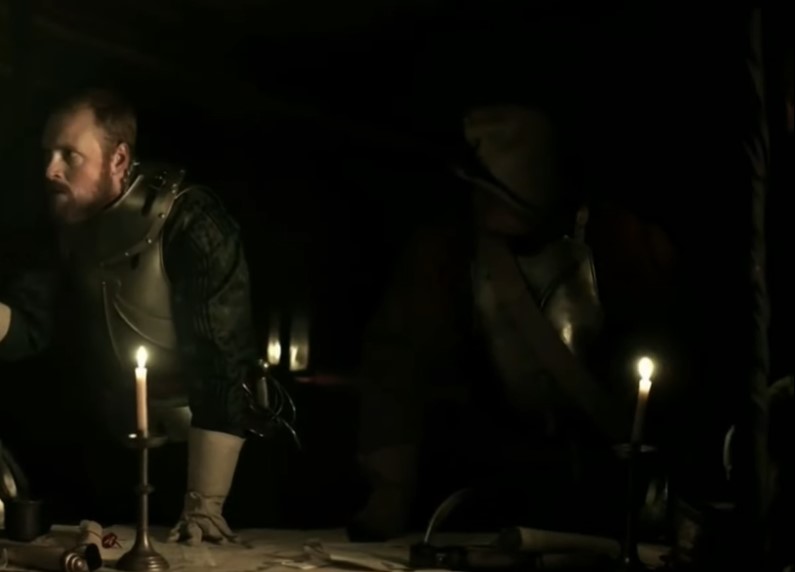 Elizabeth I (2017), Channel 5 Television
Elizabeth I (2017), Channel 5 Television
27. He Got Lucky
In September of 1599, the English forces under Devereux and the Irish rebels stood ready to engage in one final and decisive battle. The odds didn’t look promising for Devereux but, before he could despair of his situation, something unexpected happened.
O’Neill sent an envoy to say that he wanted to seek the “Queen’s mercy” and begged Devereux to meet with him.
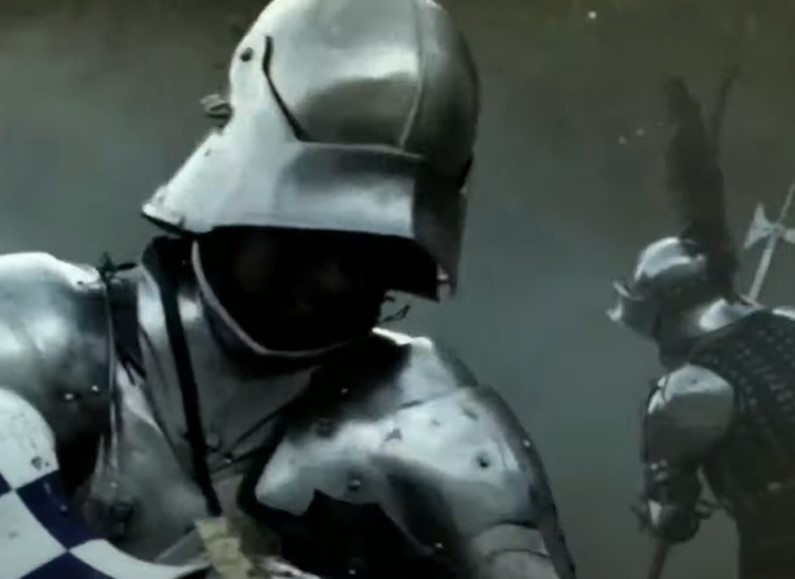 Elizabeth I (2017), Channel 5 Television
Elizabeth I (2017), Channel 5 Television
28. He Had A Heart-To-Heart
At first, Devereux was hesitant to accept the meeting with O’Neill, probably fearing that it was some kind of ploy. However, when O’Neill humbled himself, Devereux agreed to the meeting—the first of many. For 30 whole minutes, Devereux conversed with O’Neill in private. But the tête-à-tête only roused suspicions in London.
29. He Was All About Peace
Following their initial meeting, Devereux and O’Neill eventually agreed to a peace deal in which both sides essentially agreed to walk away from the conflict until May of the following year. Feeling that he had carried out his duty, Devereux “boldly” set sail for England. Needless to say, his sudden return took the Queen by surprise.
30. He Intruded On The Queen’s Privacy
Devereux’s return to England was, to put it mildly, a surprise to all. On September 28, 1599, he burst into the Queen’s bedchambers and announced that he was back. Caught off guard, Queen Elizabeth I hadn’t yet put on her makeup or her wig—or her gowns for that matter. Of course, she did not appreciate the intrusion on her privacy.
31. His Deal Sucked
Devereux excitedly told the Queen about the peace deal he had made with O’Neill—and her reaction was brutal. She voiced her displeasure and castigated Devereux for trusting O’Neill. Her exact words were “to trust this traitor upon oath is to trust a devil upon his religion”. She kind of had a point.
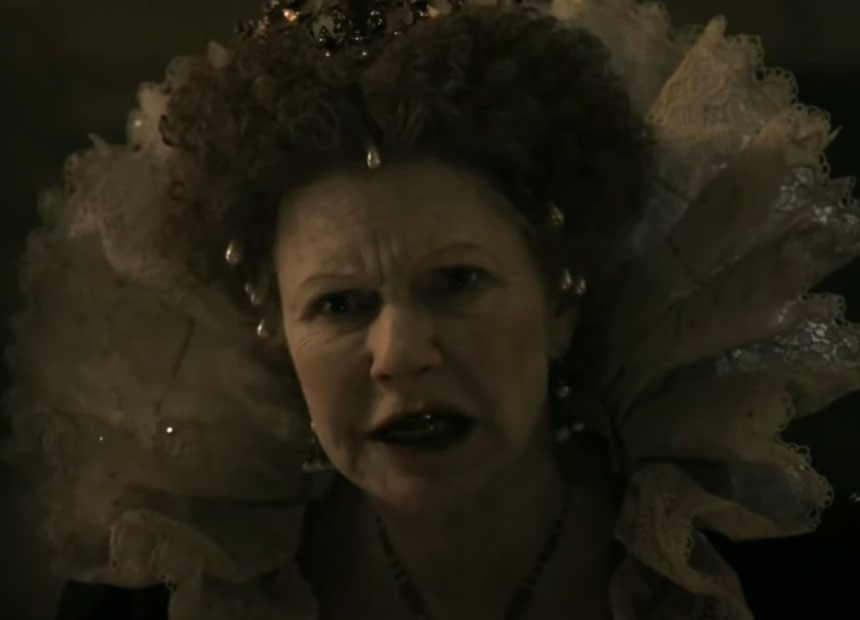 Elizabeth I (2017), Channel 5 Television
Elizabeth I (2017), Channel 5 Television
32. He Was In A Haste
Back in Ireland, Devereux’s deal was falling apart. In a report, the Irish rebels launched two attacks against Devereux in an effort to get O’Neill to break the truce. The rebels claimed that while Devereux was too busy making knights to draw his sword for battle and that despite his excitement about the deal, their business was technically unfinished.
33. He Was “An Unruly Beast”
Even though she didn’t initially suspect Devereux of having committed treason, the Queen still placed him in custody and had him confined to the Star Chamber. But if Devereux thought that he could get away with a slap on the wrist as usual, he was dead wrong. The Queen commented “an unruly beast must be stopped of his provender”.
34. He Deserted His Duty
Shortly thereafter, the Privy Council convened for a five-hour interrogation of Devereux. And things only got worse for him. The Council declared that his deal with O’Neill was inexcusable while Devereux’s flight from Ireland amounted to the desertion of duty. The Queen herself called his actions “perilous and contemptible”.
35. He Wasn’t Sweet
Given the Privy Council’s report, the Queen decided she had no choice but to punish Devereux—and her sentence was devastating. She committed Devereux to the custody of the sheriff, Sir Richard Berkeley. In addition, she confined him to his residence in London and stripped him of his official duties. To make matters worse, she deprived him of his monopoly on sweet wines, plunging him into financial hardship.
36. He Regained Some Freedom
Desperate, Devereux wrote several letters to Queen Elizabeth I, begging for some degree of clemency. Surprisingly, the Queen agreed to allow Devereux to move about at his own will but barred him from entering court. Ever weary of Cecil, however, Devereux feared that if he wasn’t at court, then his enemies would seek his head.
Ironically, he would deliver it to them.
37. His House Was Ground Zero
With his fortune, reputation, and life on the line, Devereux’s attitude turned “from sorrow and repentance to rage and rebellion”. Pretty soon, his London residence, Essex House, became the meeting place for other courtiers and noblemen who had grown tired of Queen Elizabeth I’s reign. And before long, a coup d’etat was in the making.
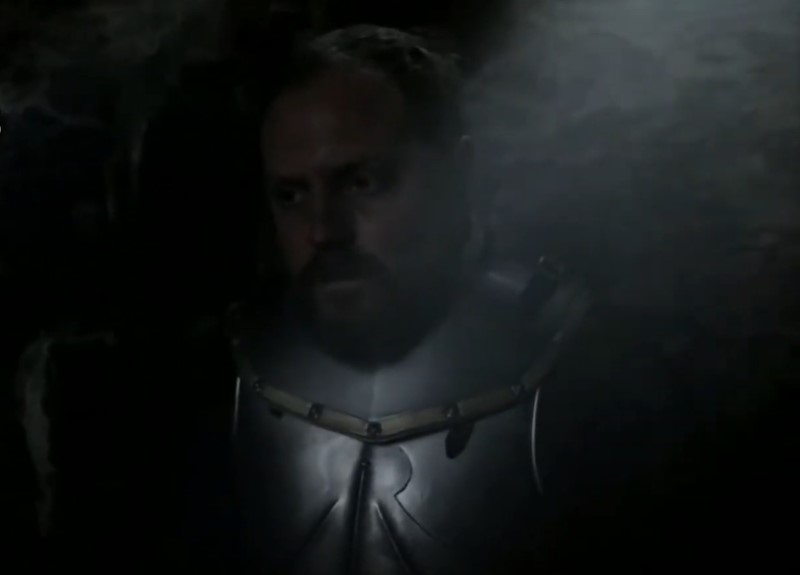 Elizabeth I (2017), Channel 5 Television
Elizabeth I (2017), Channel 5 Television
38. He Received A Summons
On February 3, 1601, Devereux’s co-conspirators met at his house to discuss his plan to “seize the court” along with the Tower of London and, for that matter, the whole city. To avoid suspicion, Devereux didn’t attend the meeting. Despite his tactics, he was in for an unpleasant surprise.
Just his crew were about to hatch their plan on February 7, however, the Privy Council summoned Devereux.
39. He Changed His Plans
Devereux’s plan was to use his popularity with the people of London to overthrow the government and force the Queen to appoint a new Privy Council. But, once the Privy Council summoned him, he knew that he had lost the element of surprise and he moved hastily to change his plans. But he would have to move very quickly.
40. He Was Too Late
Early the following morning, the Queen sent four messengers to Devereux’s house. With the help of 200 of his supporters, Devereux detained the messengers in his house and began marching to St. Paul’s Cross where they hoped to intercept the Lord Mayor. Unfortunately for them, Cecil’s messenger made it there first—with a bold message.
41. He Wasn’t So Popular After All
Devereux drastically overestimated his popularity with the people of London—as well as with his supporters. When Cecil’s messenger denounced Devereux as a “traitor”, the consequences were brutal. All of his support evaporated and his followers abandoned him. Out of options, Devereux returned to Essex House only to find that the hostages were not there. But someone else was.
42. He Burned The Evidence
Robert Devereux barricaded himself inside of his house. In a last act of desperation, he burned all of the incriminating evidence for his plot to overthrow the government. In the meantime, the Earl of Nottingham besieged his house with the Queen’s forces. Eventually—presumably after he burned everything he could find—Devereux surrendered.
43. He Wanted The Crown For Himself
After a period of confinement in the Tower of London, Devereux’s trial began. And the charges against him were dire. He stood accused of “conspiring and imagining at London…to depose and slay the Queen, and to subvert the Government”. Additionally, he was accused of endeavoring “to raise himself to the Crown of England”.
44. He Tried To Distract The Jury
In his defense, Devereux tried to deflect by lobbing accusations at Cecil. He claimed that “papists have been hired and suborned to witness against me”. He further claimed that Cecil had stated, aloud and in his presence, that the Infanta of Spain, Isabella Clara Eugenia, was the sole and rightful heir to the throne of England.
45. His Uncle Betrayed Him
No sooner did Devereux make the accusation than Cecil—who had been hiding behind a secret doorway—popped out and proclaimed his innocence. And he had a secret weapon up his sleeve. He’d brought a witness: Devereux’s own uncle. William Knollys took the stand in defense, not of his nephew, but of Cecil. After that, there was nothing Devereux could do to plead his innocence.
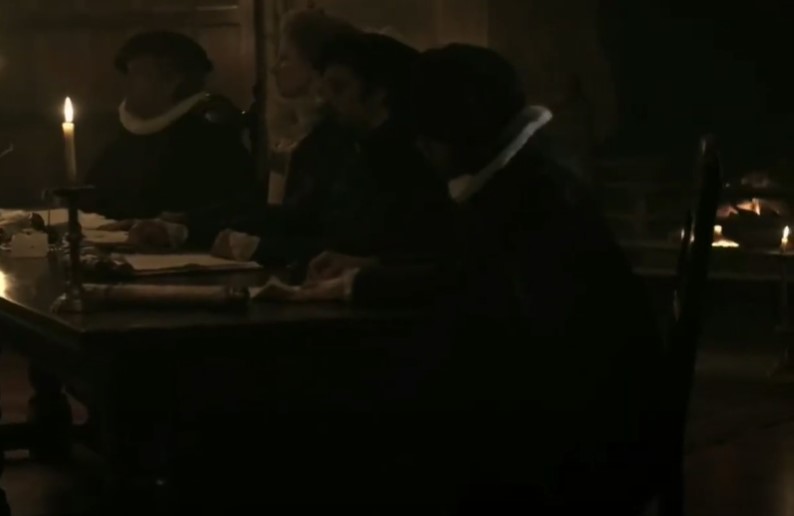 Elizabeth I (2017), Channel 5 Television
Elizabeth I (2017), Channel 5 Television
46. He Betrayed His Sister
In the Devereux household, betrayal and treason appear to have been genetic. Before William Knollys betrayed Devereux, Devereux had betrayed his own sister—and his claims were chilling. To everyone’s surprise, Devereux accused his sister, Penelope Blount, Countess of Devonshire of treason. Of course, no one believed him and the charges went nowhere.
47. He Lost His Head
Devereux’s peers found him guilty of the charges laid against him and sentenced him to, well…the only fate suitable to a traitor. On February 25, 1601, Devereux was beheaded for treason—but that’s not the most disturbing part. Cruelly, however, it took the executioner three swings of his ax to fully separate Devereux’s treacherous head from the rest of him.
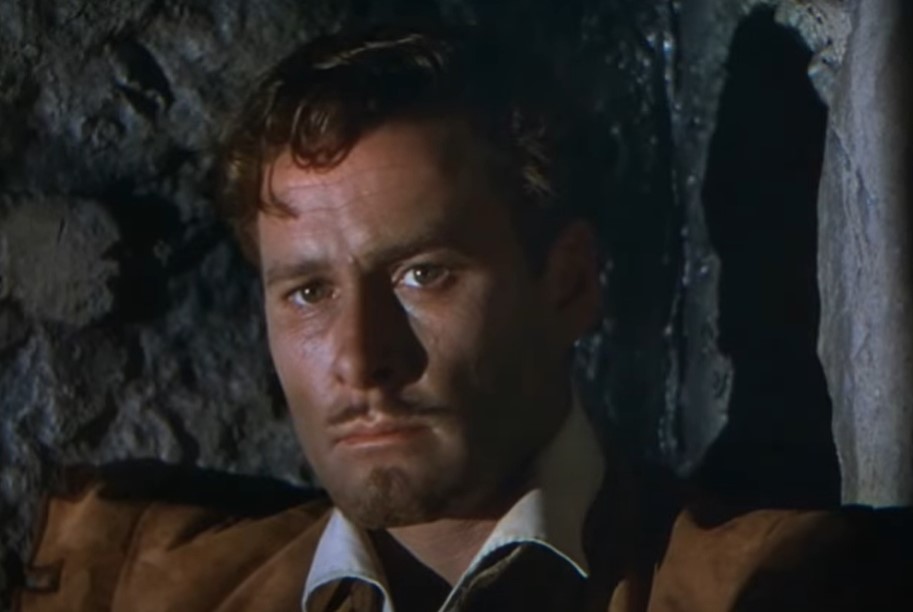 The Private Lives of Elizabeth and Essex (1939), Warner Bros.
The Private Lives of Elizabeth and Essex (1939), Warner Bros.
48. He Pardoned His Executioner
In an ironic twist that Robert Devereux probably did not appreciate, his executioner was a man named Thomas Derrick. Devereux—when he was still the Earl of Essex and had a head on his shoulders—had pardoned Derrick of his own heinous offenses on the sole condition that he serve as an executioner. Obviously, he wasn’t a very good one.
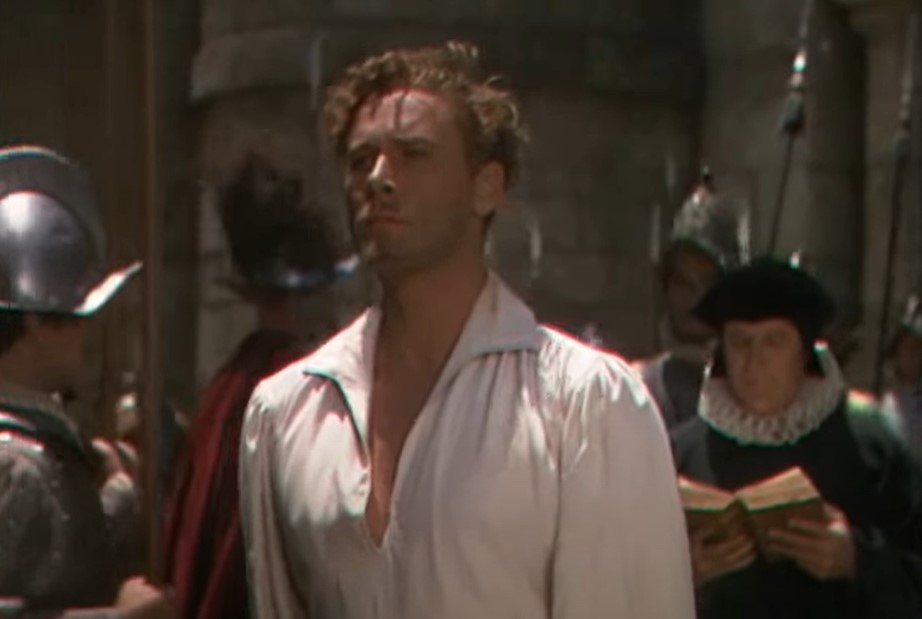 The Private Lives of Elizabeth and Essex (1939), Warner Bros.
The Private Lives of Elizabeth and Essex (1939), Warner Bros.
49. He Had A Ring Of Power
Legend has it that Robert Devereux and Queen Elizabeth I had a secret pact. The story goes that the Queen had given Devereux a ring, dubbed the Essex ring, following his exploits in Cádiz. Allegedly, she instructed Devereux to send her the ring if he was ever in trouble. And, apparently, he tried to before he…you know…lost his head.
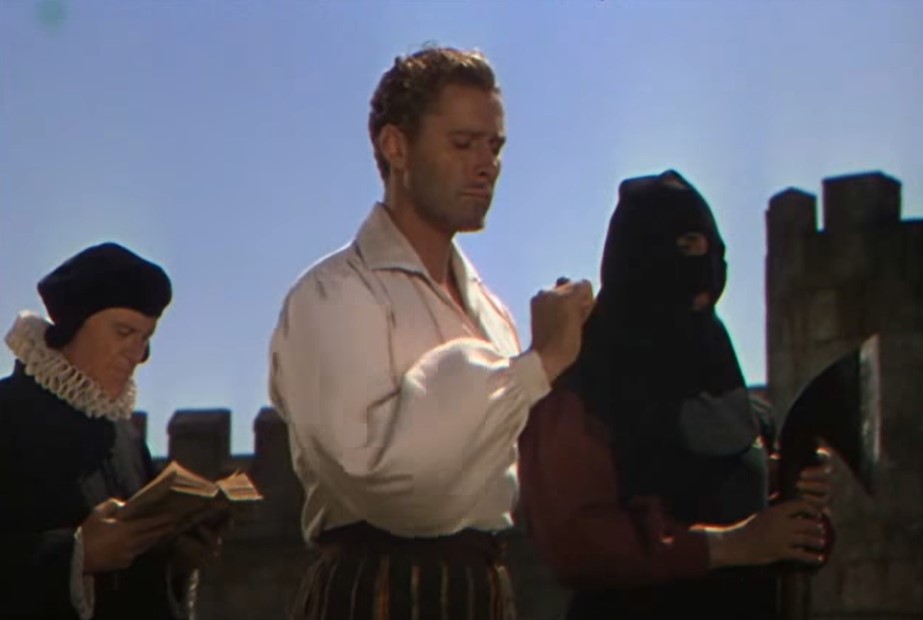 The Private Lives of Elizabeth and Essex (1939), Warner Bros.
The Private Lives of Elizabeth and Essex (1939), Warner Bros.
50. He Gave Up The Ring
The historian David Hume claims that Devereux gave the Essex ring to Catherine Howard, Countess of Nottingham after his trial—only for her to deal him a cruel betrayal. Seeing as though the Countess’ husband, Charles Howard, was an enemy of Devereux’s, however, she never gave the Essex ring to the Queen. You might say Devereux lost his “hand halo” and his head.
51. He Was In The Queen’s Good Graces In The End
It’s possible that Queen Elizabeth I regretted her decision to allow Devereux’s beheading. Allegedly, with her final breaths, the Countess confessed to Queen Elizabeth I that she had withheld the Essex ring in order to further her husband’s interests. Furious, the Queen supposedly replied, “May God forgive you, Madam, but I never can”.

